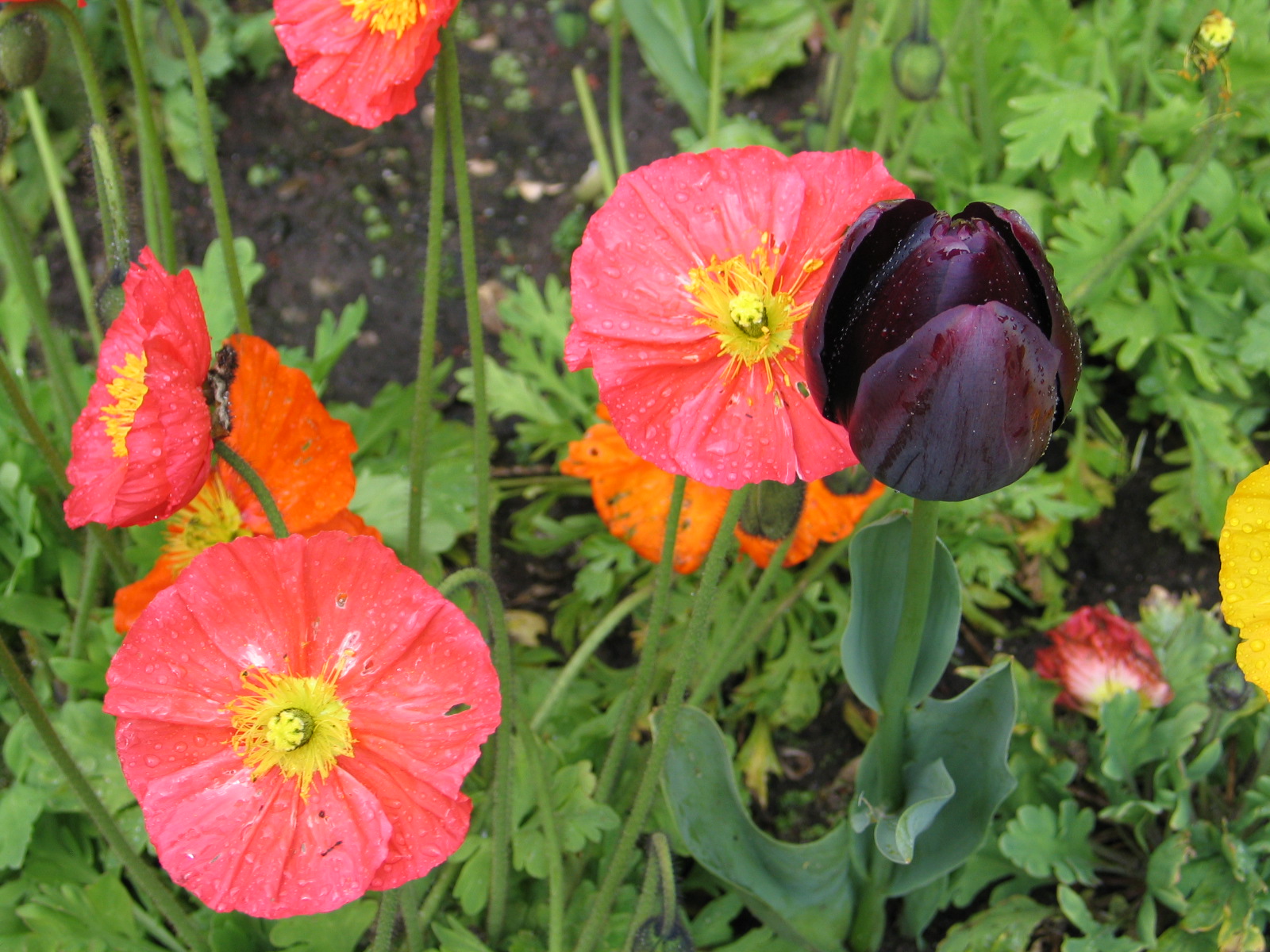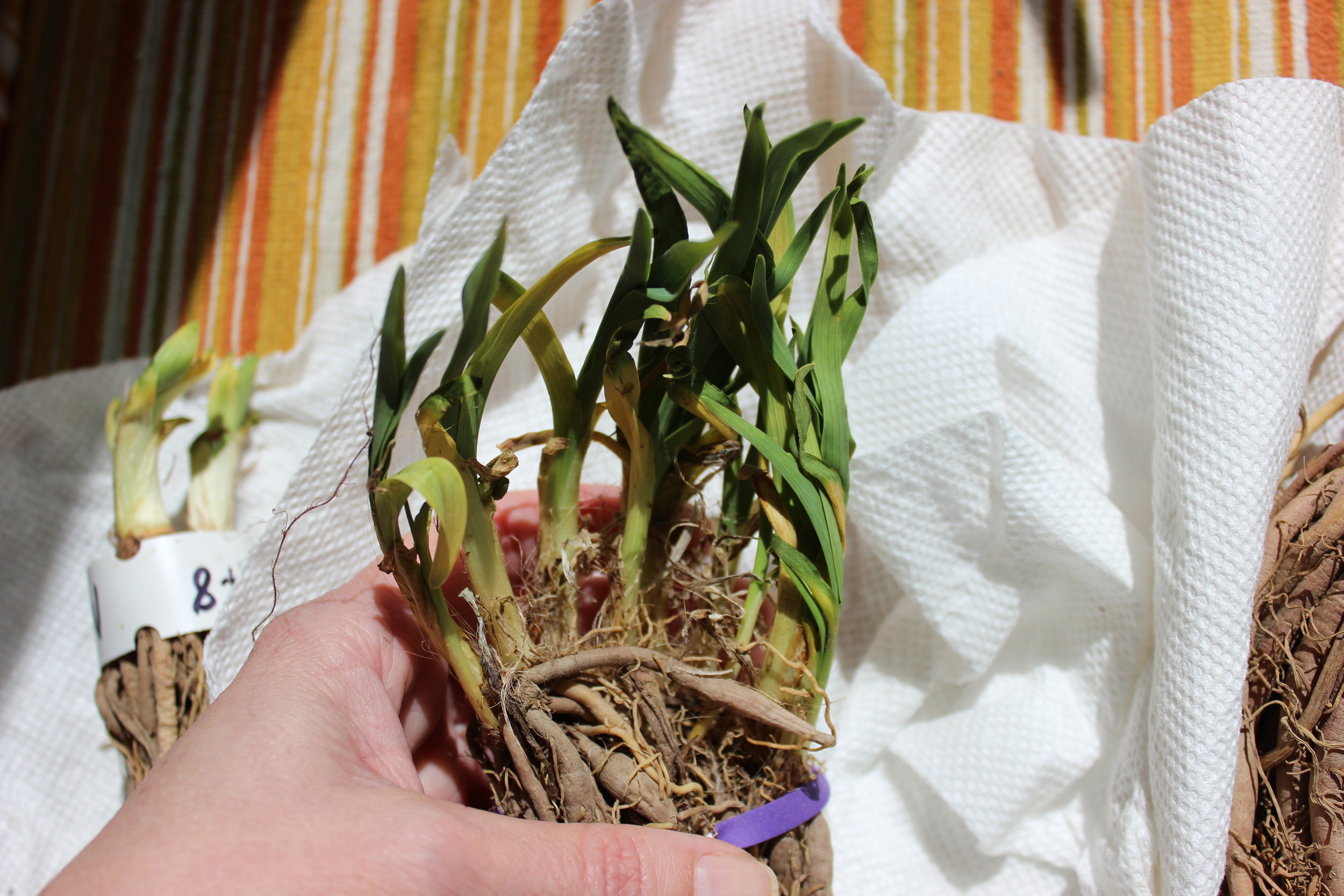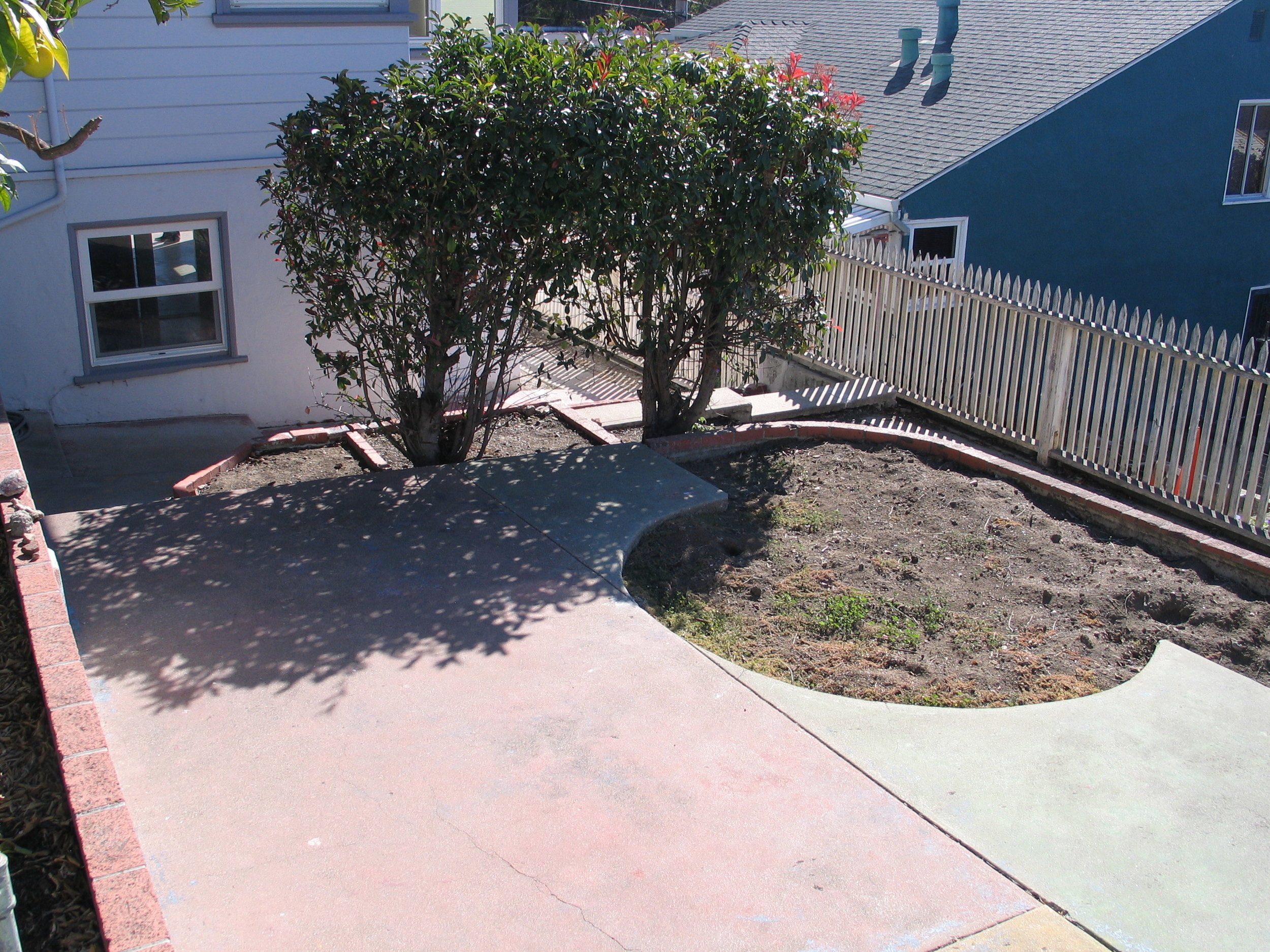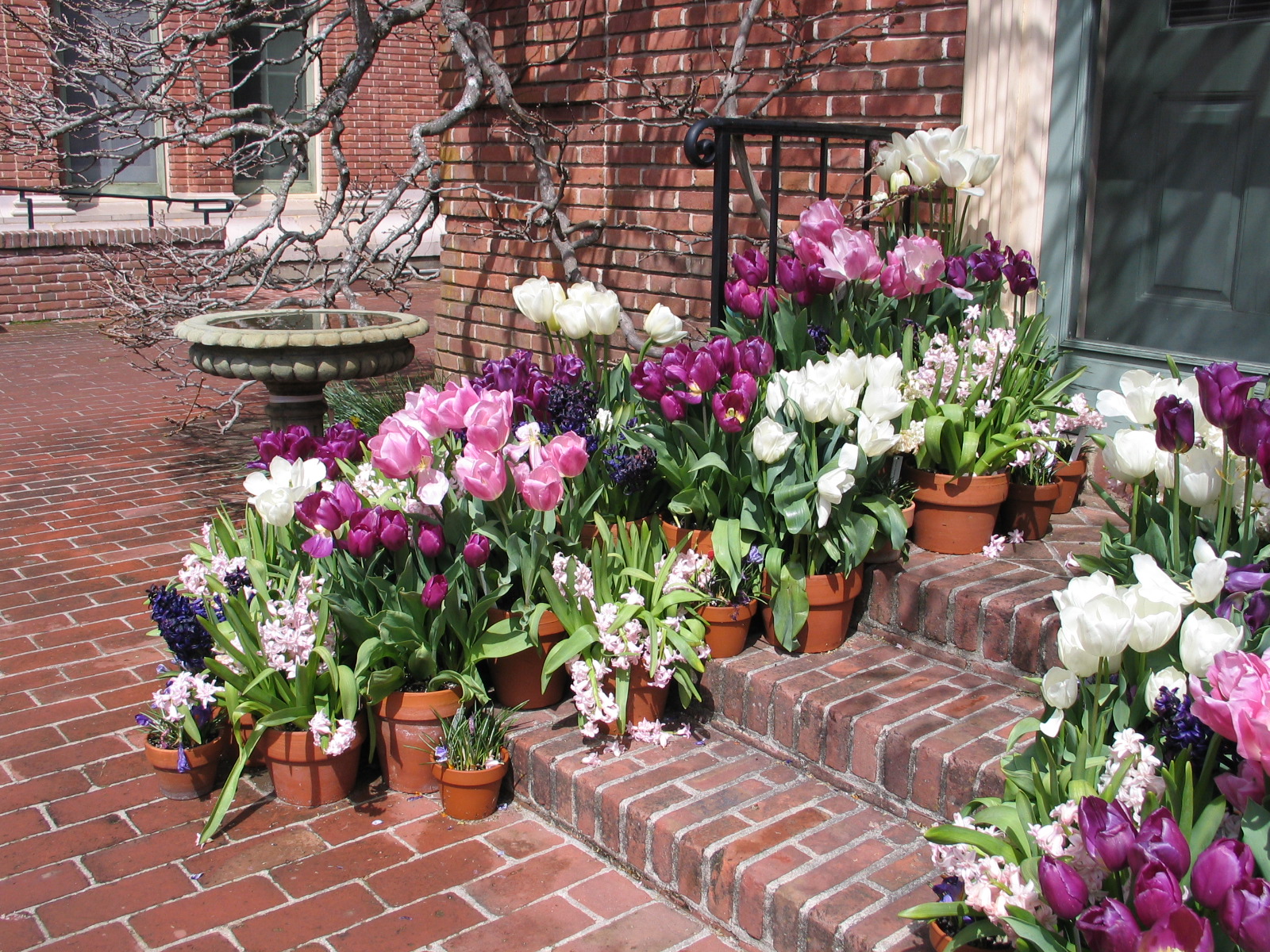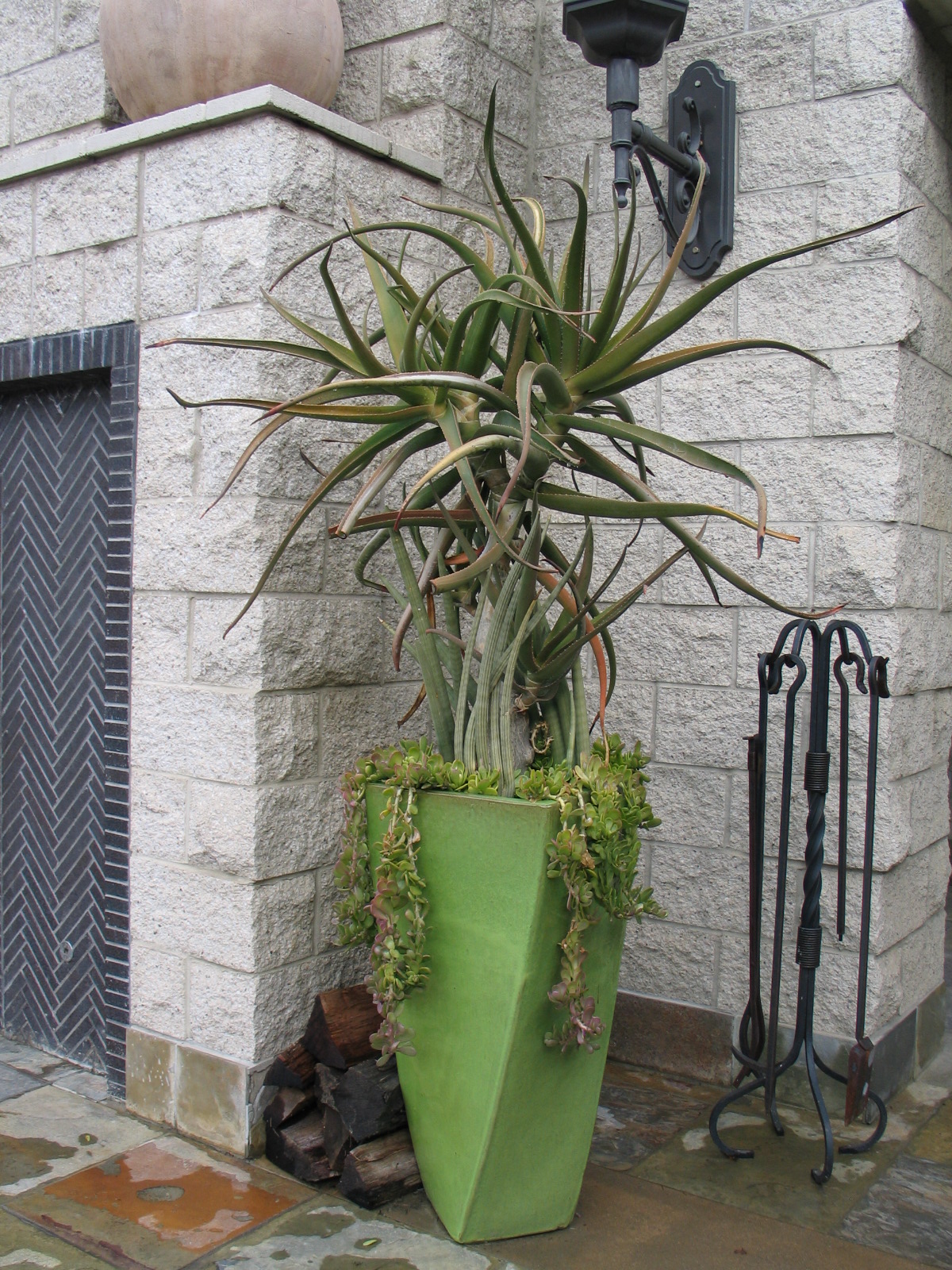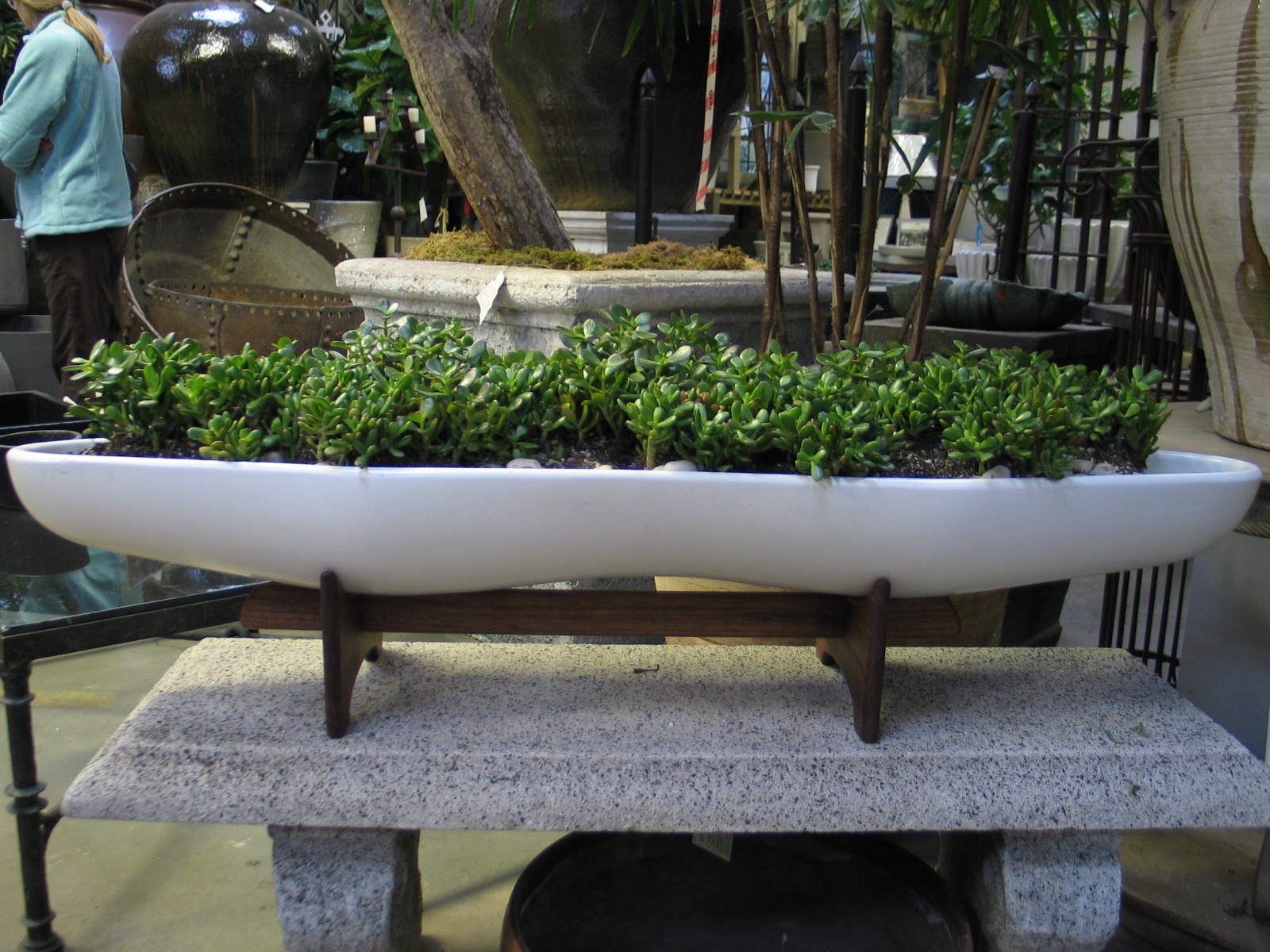You know the stand-by sitcom joke that when dating someone new, you should let the crazy out only a little bit at a time? Well, I've been writing this blog a while, so here's a little piece of my crazy made just for you!Sometimes I get something stuck in my head like a bad craving and MUST have it. You know what I mean, yes? Ever want chocolate really Really REALLY badly? So much so that it felt like a biological need? Yeah, like that, but for colors, color palettes, plants, and so forth.Today, my mail brought me a daylily I've been coveting for years and could never obtain (darn you, Martha Stewart Magazine!). But, thankfully I now have Hemerocallis 'Milk Chocolate'. I've planted it in the garden and hope to grow it up big and fat. I bought it from the generous folks at North Country Daylilies in Buskirk, NY (now apparently gone). Hemerocallis 'Milk Chocolate' is the little guy all the way on the left in the photo above.See, the growers here in California who grow daylilies don't seem to grow this particular cultivar (or at least not list it online). Some growers list it but didn't actually have any or wouldn't return my calls and emails - after looking for this thing for years, I was thrilled when North Country said they had one. ONE. Not only that, they were willing to ship it to California - another stumbling block I've run into before. BUT, they sent me a 3 fan plant, more than most mail order companies would send.I bought 'Milk Chocolate', 'Third Witch' and 'Vatican City' to make the most of the shipping. I stole the images below from the American Hemerocallis Society (AHS) webpage:Milk Chocolate:Third Witch:Vatican City:North Country sent me the biggest danged plants, I am completely delighted. In NY where they are, the snow has just melted away and the dormant daylilies are beginning to stick their heads up. Out here in Northern California, it is warm and spring is old news.One of the ways I hone my professional knowledge is to order plants from mail order companies and see what happens - I look at accuracy, plant quality, packaging, and customer service (bonus: an excuse to buy plants). I've had some wonderful surprises as in this daylily order. I've also had some really unfortunate and problematic orders (I won't be ordering from Wayside or Easy to Grow Bulbs again) that surprised me the wrong way.I've found that generally the growers who love their plants and specialize in certain kinds of plants have the best stock. The big business companies send the smallest, least healthy plants, the most poorly packaged, and have the most errors in order accuracy. I once got a box of dead plants from Wayside and they never did return my inquiries. So, when something goes right like this, I like to crow about it.Do you see these roots on H. 'Vatican City' and the extra fans on 'Third Witch'?! Mail order plant droolworthiness:I have a few other daylilies that I will tell you about another time - that will be fun - there's more crazy to share there.Thanks for reading!
Design beginning with a PEN?!
My folks visited me about six months ago or so. While reading my draft portfolio booklet, dad started laughing. He'd read where I stated that I start every design with a pen. 'No you don't, you have a drawing tablet! You draw in the computer!' says my dad. No, I don't, but I thought it was a funny assumption and so here we are talking about it.Here's the thing - using technology is lovely when you know what you want it to do, but when you have no idea, when you're imagining stuff, using Photoshop with a tablet and stylus is not the most direct route from the brain. You have to push buttons, set layers, import files, etc. Forget THAT! For me, using a pen is the shortest distance between creative thought and seeing it with your eyes (on the page).Take for example a current design project in Southern California, it is for the residence of an Architect I worked with years ago:I typically sit in a coffee shop and doodle for a while while studying site photos to really wrap my head around the issues of the site and try out various ways of shaping the space, fitting in uses, etc. I use a printed base plan under tracing paper, my favorite Japanese ballpoint pens, and a latte (in reverse order). The first round is not to scale, exploring idea after idea, small about the size of an index card.Sometimes I do studies that try to fit certain ideas to the site regardless of anything, and these usually look pretty nuts, especially when I don't re-draw the parts I've decided against:After generating several concepts, I refine a few ideas into what I still call conceptual design, and I limit myself to 3-4 per area max. In this case, there's a front garden and a rear garden. Even now, nothing is really measured, it is all eyeballed and still very sketchy. Notes around the edges help me remember the images I had in my mind's eye for plants and other materials. I have to make some assumptions about the clients' lifestyle, and sometimes I suggest things they have not thought of - like what if they said they want the rear garden to be for kids' play but the front is actually a better size for it....(like in this garden).... the interview process can provide a lot of information, but you really can't explore all the possibilities in an interview or two, and it helps to see ideas drawn when discussing them.At this point, I sometimes send it to the client for input. Below are the finalists for the front garden:and here (below) are the finalists for the rear garden:Some clients enjoy working at this sketchy loose level, and this client is definitely one of them. I'm honored to be designing the home landscape for his family, I hold his abilities in the architecture world in high regard and I know he and his wife have great taste. However, there are clients for whom it is more appropriate to narrow things down to one or two ideas and do a much more formal, complete presentation. I like both approaches, but for sure, this one allows for the client to have much more input at the very early stages.SO - which will they choose? We'll see.
Graphics Bootcamp - better for my students or me?
I taught a new class (new to me) this month at UC Berkeley Extension: Graphics Bootcamp, it finished up this past weekend. It is two full 8 hour days of instruction held on two consecutive Saturdays. Since I hadn't taught this before, I had a lot of preparation to do which was fun to pull together. I did most of my planning at my favorite coffee shop, Julie's in Alameda, so I could focus. Being at Julie's begins a whole other story for another time (check back next month - early October). First I looked through my favorite books on landscape graphics:From left to right above, that is an old edition of Drawing the Landscape by Chip Sullivan, an old edition of Landscape Graphics by Grant Reid, my 3-ring binder of images and drawings (kickin' it old school with the binder), the relatively new book Freehand Drawing and Discovery by one of my favorite people James Richards, Drawing and Designing with Confidence by Mike Lin, the current (Sept 2014) copy of Landscape Architecture Magazine put out by the ASLA that had some nice concept sketches in it, and my big pile of notes, exercises, and general mayhem (in the orange folder) see below:Then I watched about 12 hours of how to videos on YouTube. I borrowed exercises from the books, made some up, tried all of them against a timer, wrote the syllabus and my own lesson plan list, gathered inspiring links and images on Pinterest and stuffed a black and decker toolbox full of colored pencils, pens, pastels, markers, and so forth. I steeped myself in beautiful drawings for about a month. I was surrounded with color and texture and started to realize that the pressure of doing everything faster while I was working for others, the drive to take everything to the computer, to use technology, had allowed me to set up some uncreative habits.Now with class done, I don't want to use the renderings I am about to send to a client - renderings I did in Photoshop that will probably suffice, but did not necessarily take less time than if I'd done the work by hand. I believe that I can do the renderings faster by hand, and they will be more interesting. The only drawback is that there are more steps - in Photoshop I sit here entering information on the computer, and then my work is instantly available to be emailed because it is already digital. There are no trips to the local print store, no scanning an oversize sheet, none of that. What it lacks, and maybe this is the fault of my Photoshop skills, is a certain amount of soul. Don't get me wrong; I have a Wacom drawing tablet that allows me to make a drawing on Photoshop look like it is hand-drawn, but there's still something about touching markers and colored pencils to real paper that adds an intangible bit of heart.I've heard the adage that 'if you want to learn, teach', and I suppose I knew that I would learn a great deal by teaching a new subject. However, what I did not expect was how completely inspired and excited I would become in the process. You can expect that the next project I post will have hand-drawn graphics to go with it.
Oh, Lantana, How You Vex Me!
The front of my new place is awash with purple Lantana (Lantana montevidensis). It is lovely stuff if you are both color blind (unless you're into this sort of purple, nothing wrong with that!) and an admirer of wildlife. There are butterflies, bees, spiders, and lizards all over it. It is absolutely marvelous for year-round blooming and needs no supplemental water once established (at least not here, I turned the irrigation off last fall).The flowers are the pepto bismol of purples - not my favorite, though maybe someday I will find a companion plant with a color that mitigates the pepto purple hue. Meh, maybe not. A dear friend of mine said that the overwhelming amount of purple Lantana in my garden made my place look like a retirement home.As much as I'd like to be able to retire (I'd still spend my time designing gardens - I love it that much), I am not ready to live in a dadgum retirement home! Talk about death by association; I can't look at it anymore without thinking about retirement homes. As if that wasn't bad enough, my lovely boyfriend thinks the foliage smells like poo (the flowers smell nice at night). Charming: a poo scented retirement home.Here's my vexation: as much as I intend to remove the Lantana and put in other stuff, it is happy, healthy, requires no water, and supports oodles of critters. So for now it stays.... providing food and shelter for all those bugs and lizards, but lookout, Lantana! You're living on borrowed time. Wanna know what I think might fill the space above? I'm considering a collection of spineless Opuntia that my friend Melinda sent me from Texas along with a few I've collected on my own here. The ones from Texas are rooting in the shed right now - cross your fingers that they all take!So there's my dilemma - removing the Lantana removes habitat, but goodness gracious, there's so danged much of it, I don't really like it, and the new design/plants aren't ready yet. Patience....
Marketing (or not) With My Clients' Homes
I think I did it right. I started designing gardens before I knew that was what I would "grow up" to do. My first forays into site design as a kid included a fantasy plant nursery, pet store, and flower shop. My parents' back yard was the subject of many site plans as well, though they didn't implement my thoughts.I earned my BLA (Bachelors of Landscape Architecture, a 5 year degree), got my first "real" job, and after a few years, began taking my own projects on the side. This year I started teaching and finally went full-time as my own boss. I have essentially spent all my free time for the last mumble-mumble years absorbed in design, gardens, plants, and everything related.You would think that I would have no shortage of beautiful built projects to share online, adding new ones all the time. Below is part of why I don't put a full body of work in public online places:Naturally, many of the projects I've worked on have been with former employers. Many of them are my work or at least partly so, but the former employer owns the intellectual property. I can put the work I did in my own portfolio, that is industry standard, but it is not kosher to put that stuff on my own website or blog to promote myself apart from promoting the company I worked for at the time. In addition to that, I have agreements with some former employers that state I won't put anything online that came from my employment with them, and some clients and I have similar agreements. Not marketing with clients' projects can be limiting in this age where everything is available at a click, but there ya go.I respect the wishes of my clients and some of them are more particular about their privacy than others. I never post or put online anything that a client would like to keep private. For some of them, that is everything. The work I do is often someone's home, and I totally get wanting to keep home private!Additionally, a garden is never done. The design work is only a portion of making a quality outdoor environment. A great many projects are phased in for budget reasons or other limitations (this can take years!), and it also takes time for the plants to grow in. In a recent post on a project in Italy, you can see that the photos I posted span about 2 years - after two years, that garden is just getting to the point where it looks good enough to take photos and post them. If I had posted it too early, it would not have had the same ability to represent what the intention was in the first place.I am incredibly fortunate to work on amazing projects with amazing people - whether their own home, a rental, or a commercial or institutional project, there's opportunity for discovery, beauty, and environmental benefits all around.... so am I still doing it right? I sure hope so.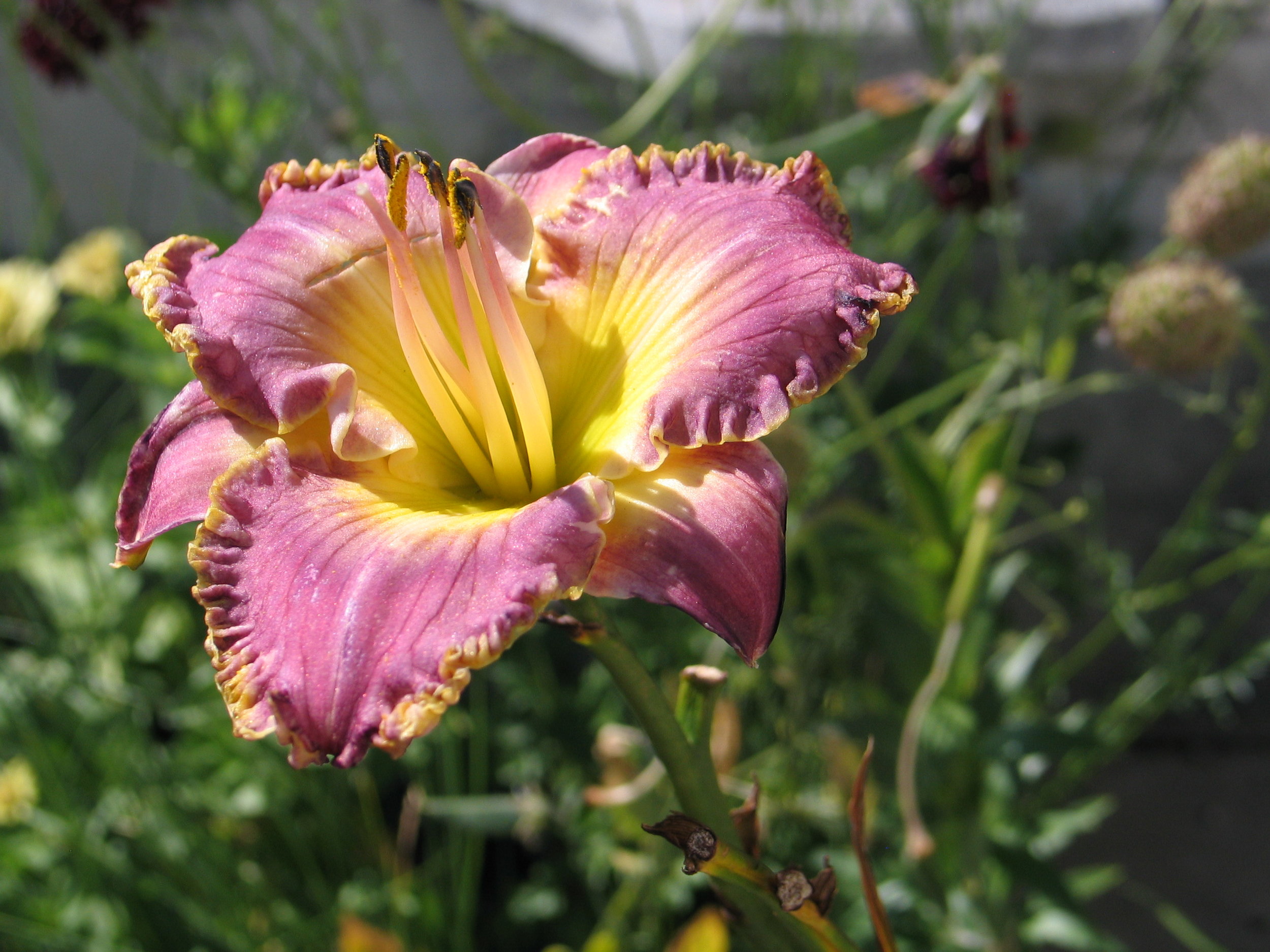
A Garden in Italy
2014 June
While I was away neglecting my modern web-presence-building duties, I enjoyed working on a particularly wonderful little project.... a Bed and Breakfast in Italy! I have never been to Italy, but when my good friend and talented architect Glenda Flaim showed me her work on Casa Incantata, I asked if I could take a stab at the planting design which had yet to be finalized. Neither of us had any idea what would happen. Come on, what do I know about plants in Italy?! Niente. The way we worked around that, and got the garden done was a genuinely collaborative effort involving Glenda, the Owners, their gardener, some dutch visitors, and me:First, Glenda sent me a photo of the site with notes (in green) on her thoughts for the planting:We chatted about the decisions on the photo - why the hedge, what is the lawn for, stuff like that. I studied snapshots of the building and tried to imagine what it would be like to be there in person. Glenda mentioned that the house had just won a national award for sustainable architecture, and was photographed soon after I started noodling with the design of the garden on paper. You can see pre-garden professional architectural photos here and here. She sent me a computer drafted file of the site and I gathered photos of plants that came to mind.I started the planting design in June 2012:I mapped out the planting design in areas with palettes. The areas got names: there was "lawn", "spicy", "meadow", and "hedge". I wrote a description of how each of these areas would be different from each other, what forms and colors I was trying to emphasize, and what colors I wanted to avoid entirely. I wrote out how these plants would change with the seasons and the desired effects. With lists of plants and their written intentions, the memos were translated into Italian and back into English through Glenda.The Owners and their gardener started looking for the plants and sent word back what was available and not, and we figured out plants that might work instead. More memos handling spacing and layout were translated back and forth, plant research was done on both continents. Plants were purchased and installed as they were found; this took a few seasons to finish. Some were purchased in Italy, some shipped from the U.S., and the last, elusive bulb was a gift from some visitors from Holland who learned of the missing bulb in discussions of the garden during their stay.Over the last 2 years, I've gotten a couple of photos a season so I could see how the garden was doing. They had wasted no time getting plants in the ground. Later that same year (fall 2012), the lawn (Hernaria glabra) which also extended between the pavers, was getting its start:By the following Spring (2013) it had filled-in very nicely!The other plants were coming along too:By that Summer, you could see the different zones expressing themselves:And just last month, I got another update:It is challenging to know how a garden will look when you're designing it, and there were many anxious moments when I knew they were investing in my advice and I could only hope that the Owners would like the results. I'm not sure it is possible to tell if the image in my head matches what the garden will become. I can't know ahead of time if the Owners will like what the garden will become, and yet it is dependent on them and everyone who takes care of it to continue to support the design's intention as the garden is maintained.I am finally able to share (two years later) how things are going here in this post. I can also share that the owners are very happy with their garden, and conveyed to me this sentiment:
Il giardino che ho sempre sognato!!!
(The garden I have always dreamed about!!!)
I couldn't have asked for more.
It's Been Too Long
Hello there! I've been away from this blog far too long. Things have been quite busy with a whole mess of life and work changes.The big news is that I moved into a new place. I'm in the very beginning stages of designing the garden here, and wanted to share with you some of the challenges I am facing and what I'm doing to make this place as useful and responsive to my needs as possible. This could take me a while, but I'm game if you are:For starters, the previous occupants planted thorny Bougainvillea next to the gate to one of the side yards. You have to squeeze by it and hope there aren't any bad guys lurking behind it to get into the rear yard. Don't catch your sleeve on the sickly, not even fragrant, and incredibly thorny patio tree rose on the left as you go:If you look behind the Bougainvillea, you'll see a very typical fence which blocks visibility into the back yard (hello again, bad guys!). A friend commented to me that it seemed wrong to block views into what will hopefully become a beautiful side yard. I have to agree! Visibility issues aside, what you can't see is that this opaque fence is nailed to the once charming original fence:Way cuter, right?! yep, I thought so too. and next is that side yard that will eventually become beautiful. Here, what you can't see are all the weed seeds that germinated the moment I moved in keeping me busy indefinitely: If you follow the side yard, you come to the back where there's some lovely painted concrete in reggae colors with teensy tiny meaningless lawns and very old, well established Photinia (one of my least favorite shrubs EVER!). How snazzy is that bit of solid fencing there? I love how it gracefully blocks the view of the neighbor's solid wall. Equally enjoyable is the brick cap on the concrete retaining walls. No lack of design consideration here:Which brings me to the shed. I love love love the shed. It has holes in the roof and sides from what appear to be buckshot so that rain drips directly on the shelf and is rotting the framing. I have no idea what that railing is for, nor why there's a flagpole footing in front of the little railing surrounded platform. I call it the pulpit. The pulpit's days are numbered; same goes for the flagpole footing and little concrete pad in front of it.In the front is an unreasonable amount of purple Lantana and this thing, probably Yucca elephantipes. It will get way too big for that little retaining wall and will break it and start all kinds of trouble in the next couple of years if I don't remove it. Sorry, Yucca, you gotta go.The good thing is that when I go to the shed and look out past the festive reggae concrete, Photinias, and strange tiny lawns, I can enjoy sunsets every night.Here's to resolving the design issues and playing in the yard!
Pinterest and Design Communication
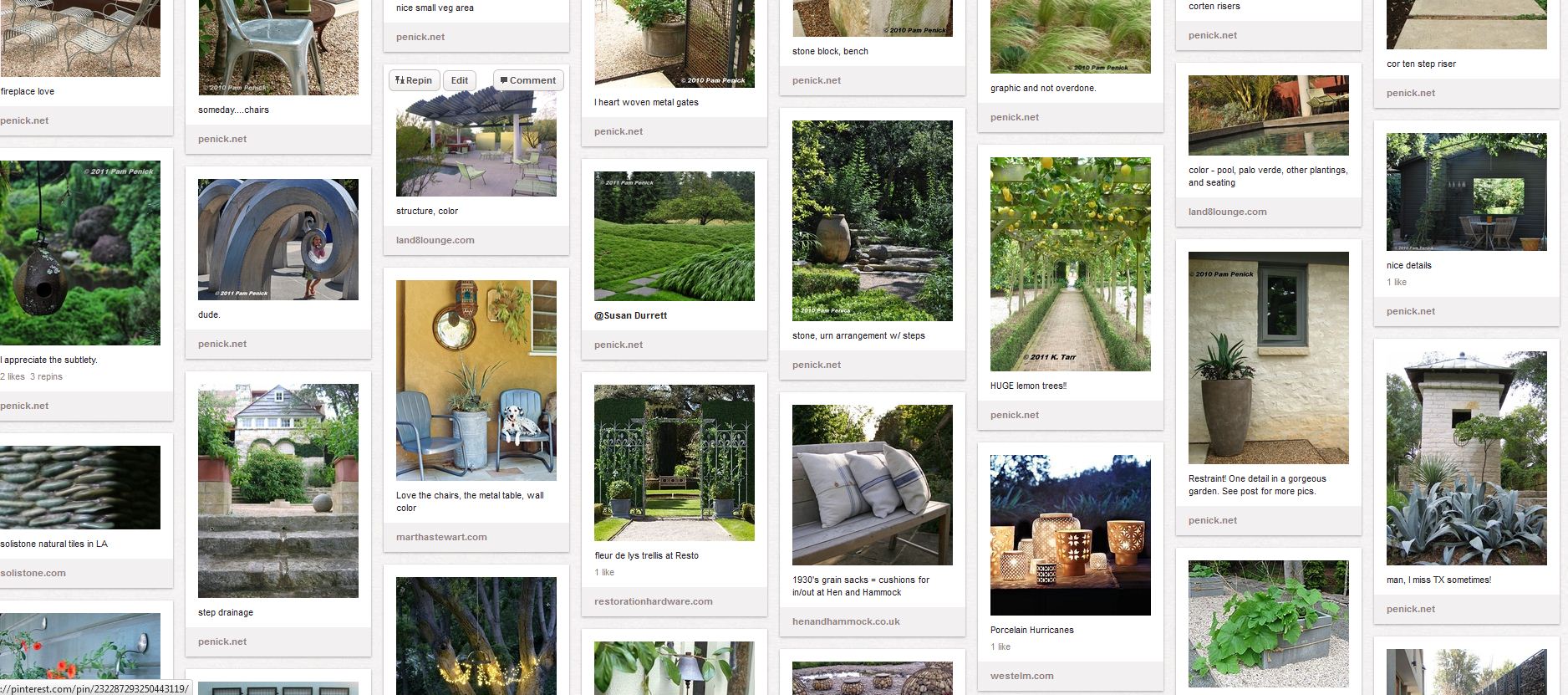 It never occurred to me until recently to use Pinterest.com as a communication tool in collaboration with a client. Granted, Pinterest can’t actually do the design work for me or my client, but it does allow for us to collaborate and understand each other in a common forum....which is proving to be so fun!Pinterest isn’t everyone's favorite tool, but for those who want to collect images and links in a web-based place, it is a lot of fun. Back in the day (like a year ago), I saved links as internet explorer's bookmarks and images were always saved to my hard-drive (which means I don't know where they came from). Now, I have links for non image-heavy things (like articles) on Delicious.com and images (with links!) are on Pinterest. I can access all this stuff as a resource from anywhere there's internet access. That's kinda handy! (What Pinterest is)I’ve only just tried using it with a client recently, and at one of our meetings, I asked what they thought. So far, so good – my client likes being able to share a photo with me, and we add comments back and forth for each other. It is so gratifying to see that my client has started a board for their project, and have “re-pinned” some “pins” from my various boards (with comments!) which helps me zero-in on exactly what they’re responding to.People can "pin" images from anywhere on the internet, and they can also upload images from their own computer... but don't mistake someone's pins for their own design ability or experience. The images come from all over the place, with and without express permission. There is some concern over permissions and Pinterest's user agreement. Several months ago, I did have the experience of re-pinning an image and then getting an email from Pinterest that the owner of that image had requested it be taken down, so they emailed me a link to the source and removed the image from every instance on Pinterest.So- if you're planning a project, or looking for an easier way to share images with your client or designer than saving and e-mailing both a link and the picture, this may be a useful thing for you!If you want to follow my boards, go ahead. I take no credit for the work you see there, though, unless expressly noted as my own.
It never occurred to me until recently to use Pinterest.com as a communication tool in collaboration with a client. Granted, Pinterest can’t actually do the design work for me or my client, but it does allow for us to collaborate and understand each other in a common forum....which is proving to be so fun!Pinterest isn’t everyone's favorite tool, but for those who want to collect images and links in a web-based place, it is a lot of fun. Back in the day (like a year ago), I saved links as internet explorer's bookmarks and images were always saved to my hard-drive (which means I don't know where they came from). Now, I have links for non image-heavy things (like articles) on Delicious.com and images (with links!) are on Pinterest. I can access all this stuff as a resource from anywhere there's internet access. That's kinda handy! (What Pinterest is)I’ve only just tried using it with a client recently, and at one of our meetings, I asked what they thought. So far, so good – my client likes being able to share a photo with me, and we add comments back and forth for each other. It is so gratifying to see that my client has started a board for their project, and have “re-pinned” some “pins” from my various boards (with comments!) which helps me zero-in on exactly what they’re responding to.People can "pin" images from anywhere on the internet, and they can also upload images from their own computer... but don't mistake someone's pins for their own design ability or experience. The images come from all over the place, with and without express permission. There is some concern over permissions and Pinterest's user agreement. Several months ago, I did have the experience of re-pinning an image and then getting an email from Pinterest that the owner of that image had requested it be taken down, so they emailed me a link to the source and removed the image from every instance on Pinterest.So- if you're planning a project, or looking for an easier way to share images with your client or designer than saving and e-mailing both a link and the picture, this may be a useful thing for you!If you want to follow my boards, go ahead. I take no credit for the work you see there, though, unless expressly noted as my own.
Inspiration Insanity
A good friend recently sent me a link to Pinterest.com. I had to wonder if I really needed yet another online account, another place to find or keep inspirational images and links. I'm already swimming in images and ideas, oodles of mental jumping-off points......I mean, really:- Digital images on my computer (tens of thousands of images)- Binders stuffed full of clipped images from magazines (an entire bookshelf)- Flat file with posters, more clippings, and materials (full, I could use another)- Filing cabinets with articles (four cabinets....at least some of it is bills)- Online: Flickr, iGoogle, Delicious ... (let's not even go there)- Bulletin boards with stuff tacked on (not to mention the fridge)- boxes of paint color fans, fabrics, stone samples....- and never mind the magazines and books....But, after spending a couple of hours (admittedly about four) on the site this morning and saving a few dozen photos, I gave-in and e-mailed them for an invitation to join. Its not like I don't appreciate more (and more and more) inspiration.....but escaping the computer long enough to eat breakfast would be good, too.
Its not like I don't appreciate more (and more and more) inspiration.....but escaping the computer long enough to eat breakfast would be good, too.
"Low Maintenance" - an utterly useless buzzword
I have come to loathe the term "low maintenance". It is essentially meaningless. I am starting to wonder if when a client requests a "low maintenance" design, what they're really saying is that they don't want to do any work themselves, including taking the trouble to find a decent gardener or asking questions.It is imperative for both the client and the designer to discuss exactly what types of gardening activities may occur before doing any design work. Be honest! REALLY! For example, when I got my hair cut last week, I told the stylist that I wash and comb my hair, nothing more. I would not promise to use any appliances or products, and she gave me a cut that works well for my specific needs.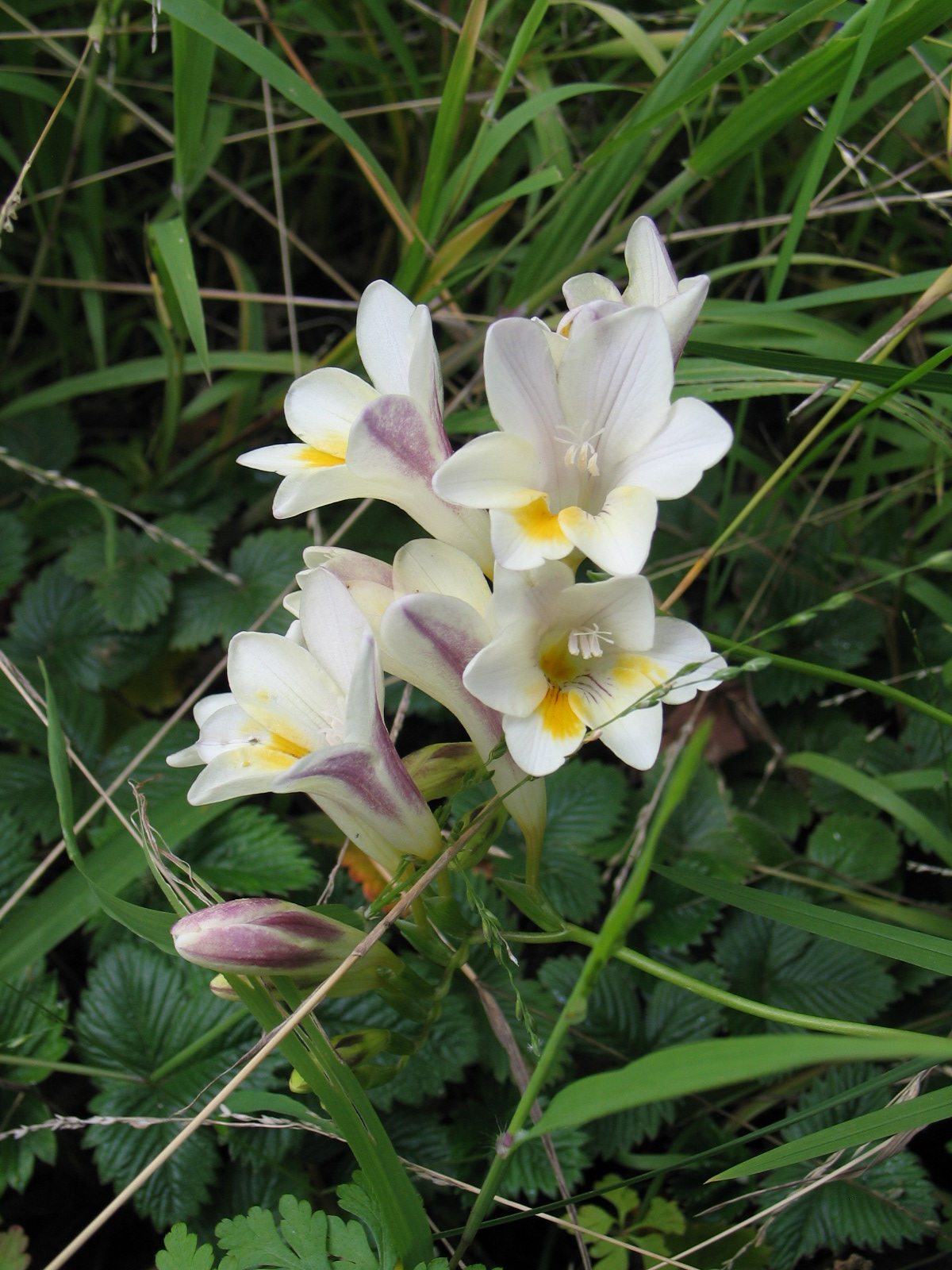 You can see from the above photo (taken on my patio earlier this month) that thanks to my personal distaste for weeding, I have a number of (un-planned) plants just growing together, willy-nilly, doing their thing. I am okay with that, so this is the design solution that my personal garden employs. I'll let nearly anything grow as long as it is healthy and doesn't produce anything painful (thorns, burrs, stingers). This works for me because I live in an apartment and I know that if/when I move, the whole thing will be ripped up - there's not much to be gained by fretting over weeds. Given a different situation, my personal garden might look quite different or it might not.I also grow several roses and a few shrubs - some in containers, some not. I grow dozens of rare bulbs, more than dozens of perennials, and a few orchids, but I don't do much "work". Every year I reliably cut Roses, Freesias, and Sweet Peas for indoor bouquets. I know that rose flowers develop at the very end of a branch and that each cut to remove a flower is, in fact, a pruning cut (and where to take that cut). I also know that my Sweet Peas will bloom nearly forever as long as I keep cutting the flowers off - it is just terrible having an apartment full of sweet pea flowers, just awful...
You can see from the above photo (taken on my patio earlier this month) that thanks to my personal distaste for weeding, I have a number of (un-planned) plants just growing together, willy-nilly, doing their thing. I am okay with that, so this is the design solution that my personal garden employs. I'll let nearly anything grow as long as it is healthy and doesn't produce anything painful (thorns, burrs, stingers). This works for me because I live in an apartment and I know that if/when I move, the whole thing will be ripped up - there's not much to be gained by fretting over weeds. Given a different situation, my personal garden might look quite different or it might not.I also grow several roses and a few shrubs - some in containers, some not. I grow dozens of rare bulbs, more than dozens of perennials, and a few orchids, but I don't do much "work". Every year I reliably cut Roses, Freesias, and Sweet Peas for indoor bouquets. I know that rose flowers develop at the very end of a branch and that each cut to remove a flower is, in fact, a pruning cut (and where to take that cut). I also know that my Sweet Peas will bloom nearly forever as long as I keep cutting the flowers off - it is just terrible having an apartment full of sweet pea flowers, just awful...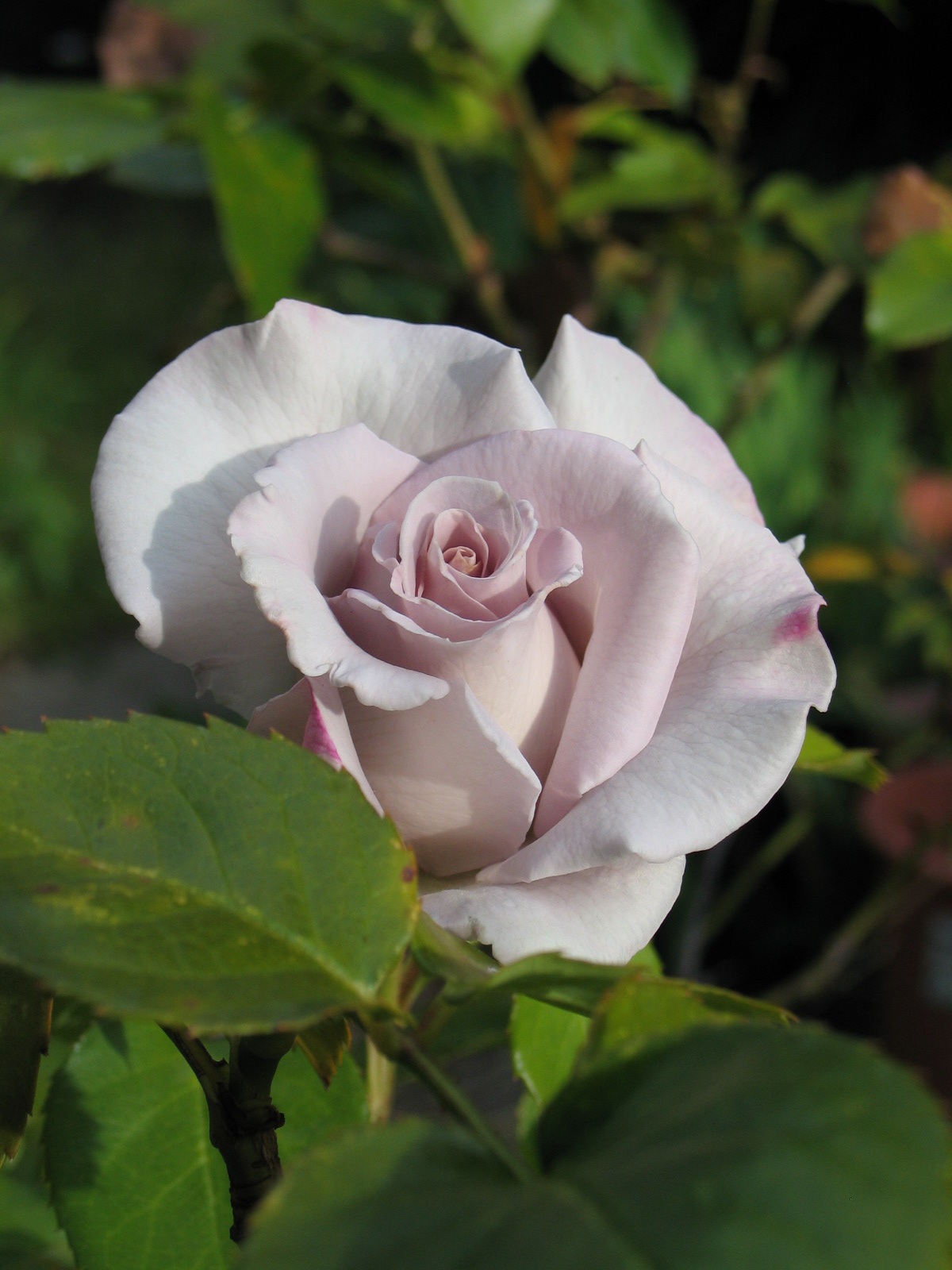 There are countless ways to design a garden so that it doesn't feel like a ton of unwanted work, and so that taking care of it is at least somewhat enjoyable. Getting it to that point is as good a reason as any to work with a design professional and/or do a bit of research for your own garden design solutions....but please don't call cutting flowers "maintenance", that just takes out all the fun.
There are countless ways to design a garden so that it doesn't feel like a ton of unwanted work, and so that taking care of it is at least somewhat enjoyable. Getting it to that point is as good a reason as any to work with a design professional and/or do a bit of research for your own garden design solutions....but please don't call cutting flowers "maintenance", that just takes out all the fun.
Associations
I read Studio G's blog often, it is a wonderful source of entertainment for me. I recently stumbled across this post, clicking on it because of the title "Religion & Garden Design". Read it.Reading that gave me the nudge I needed to finally mention associations here, they are powerful and invisible aspects of design work that must never be ignored. The better designers understand that they must get to know their clients so that subtle, personal conflicts of negative associations can be avoided and positive associations used for inspiration. Consider the meaning in shapes, colors, plants, orientation (East/West), and views.For example: when I see Beautyberry (the plant image in Studio G's post) I remember the Dallas Arboretum, visiting my friend Melinda, and working at a wonderful Dallas Landscape Architecture firm with wonderful people.The smell of Tomatoes reminds me of my childhood in Southern California, as does for Australian Tree Fern, Mother Fern, Amaryllis belladonna, Agapanthus, and Tuberous Begonias (especially the orange ones).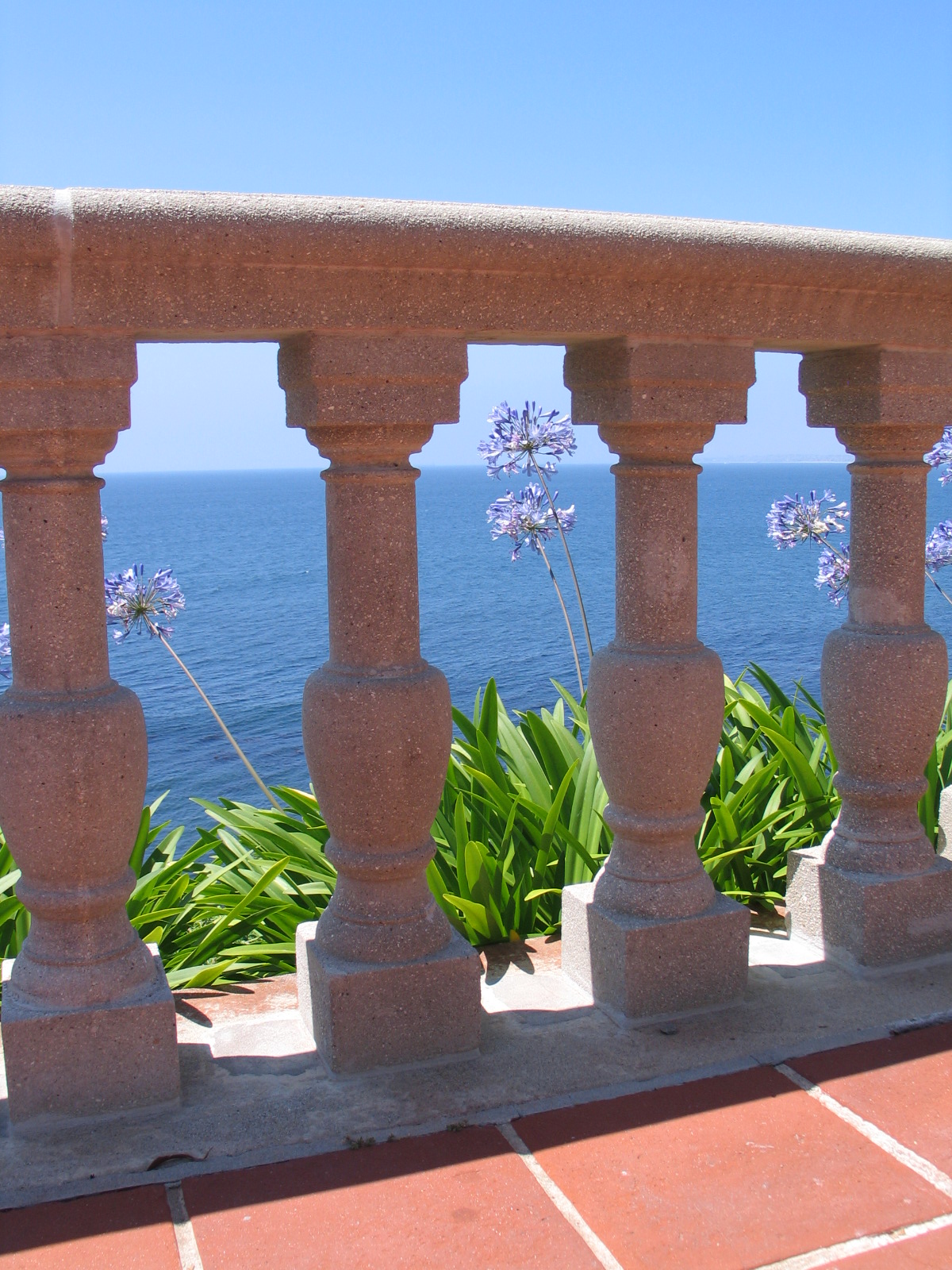 Red and yellow together remind me of Mc Donalds, which I don't think very highly of....I've seen Topher Delaney speak about her landscape work a couple of times, I also met her once at a lunch. At the beginning of a project, she asks her clients to tell her about where they lived when they were little. They have a conversation and get to know each other. She uses this more personal understanding in her design work and succeeds in bringing more meaning to the work than most.So - who are you designing for? ....and how will the design meet their needs, bring meaning, or make it beautiful for the eye of the beholder?
Red and yellow together remind me of Mc Donalds, which I don't think very highly of....I've seen Topher Delaney speak about her landscape work a couple of times, I also met her once at a lunch. At the beginning of a project, she asks her clients to tell her about where they lived when they were little. They have a conversation and get to know each other. She uses this more personal understanding in her design work and succeeds in bringing more meaning to the work than most.So - who are you designing for? ....and how will the design meet their needs, bring meaning, or make it beautiful for the eye of the beholder?
Container Garden Inspiration
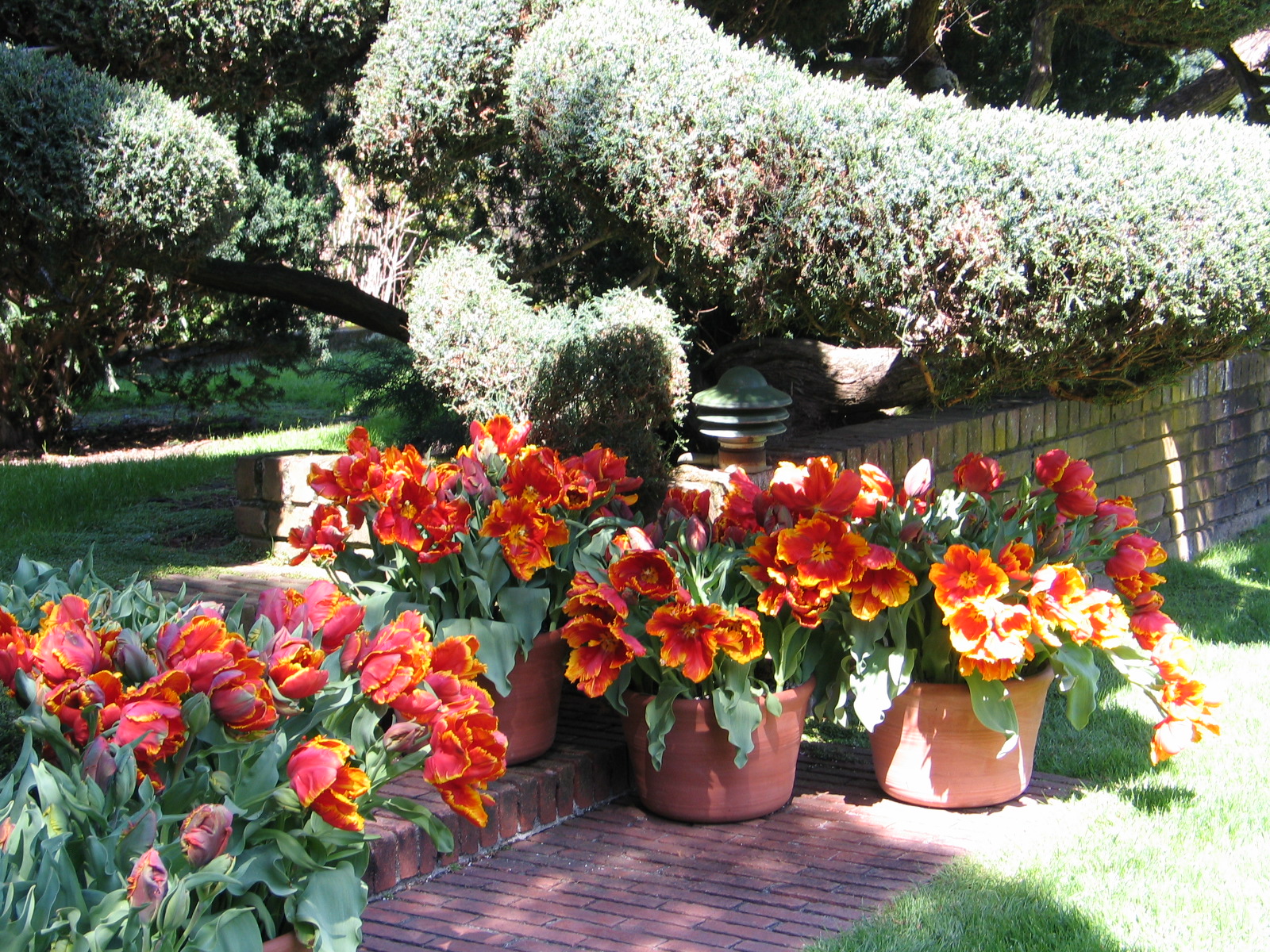 I love container gardening! Love it. I garden both in the ground and in containers at home, I can't keep from filling pretty much everything with soil and something growing.
I love container gardening! Love it. I garden both in the ground and in containers at home, I can't keep from filling pretty much everything with soil and something growing.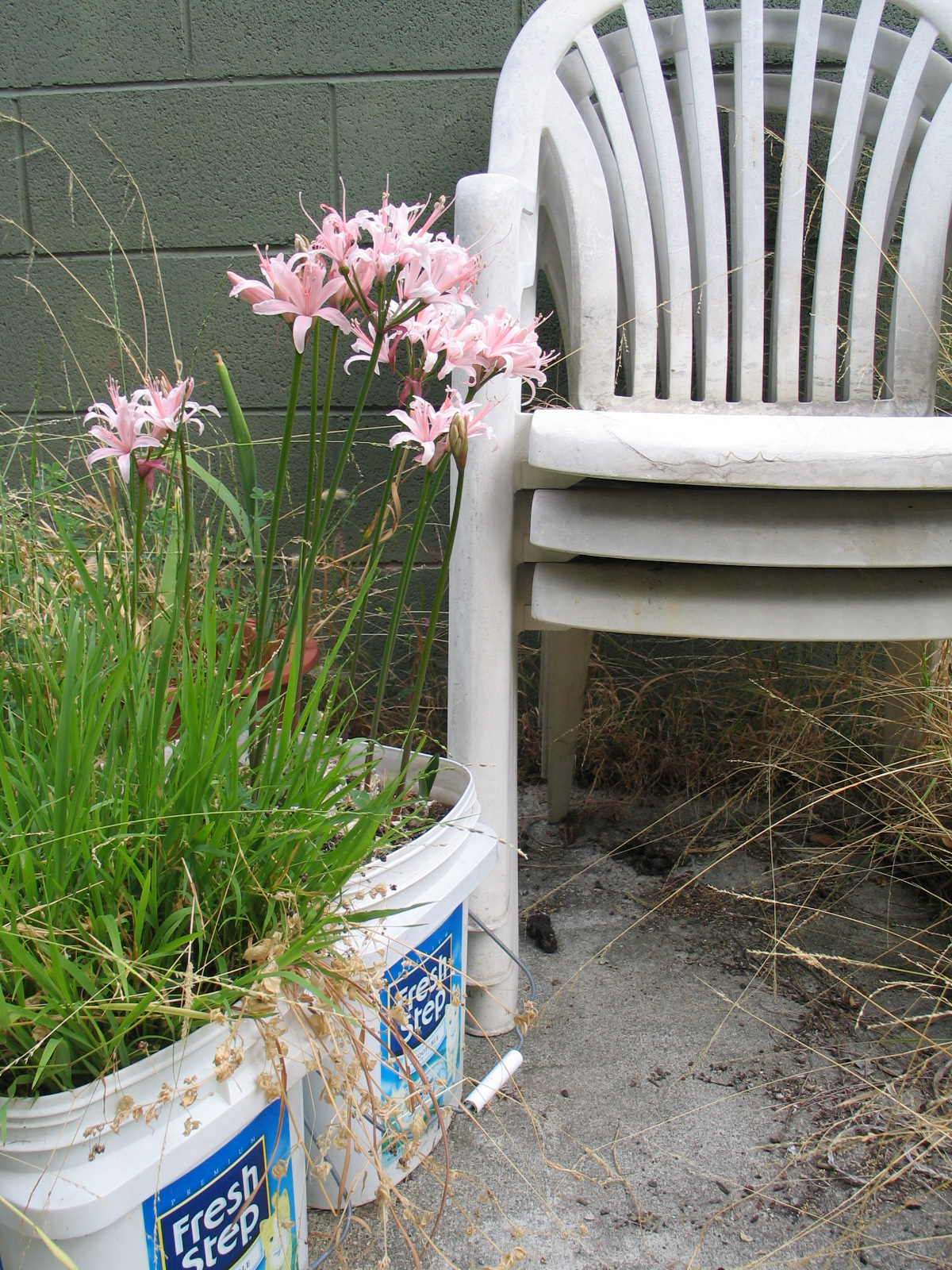
I wanted to post this because not every pot looks good with every plant, some look truly wonderful together, and some just awful. I design for clients very differently than I treat my own container garden. I choose containers for clients that go with the architecture, the plants, and so forth.
In my own garden, however, the containers can be almost anything - kitty litter buckets with holes drilled in the bottom, nursery liners, and a random assortment of impulse purchases and gifts. 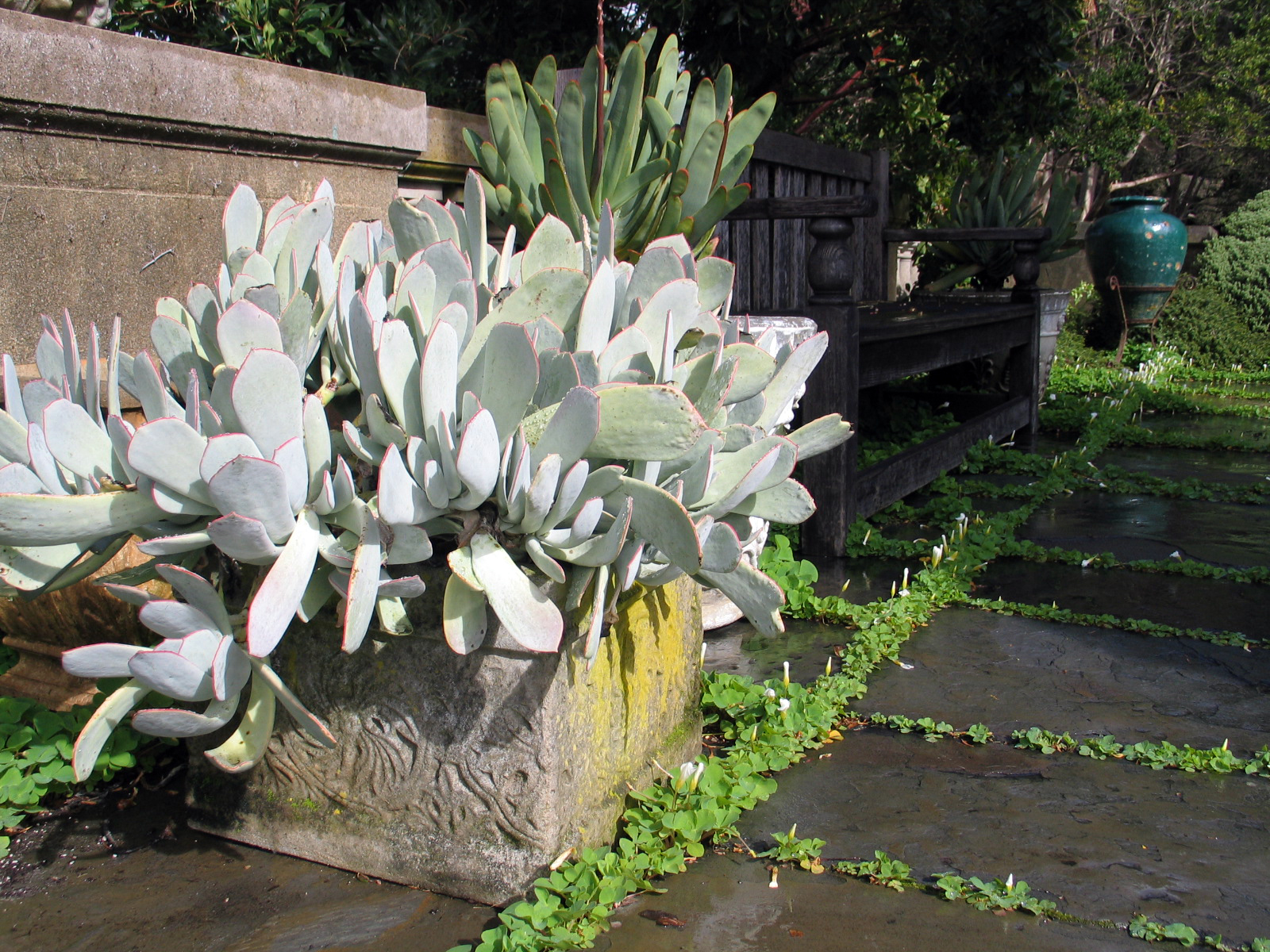
I think that the most important thing when putting together a container garden is deciding what you are showcasing; the plant or the pot?
Which plant looks good in a particular pot can be surprising. I have found that it is important to see them together if the purchase is an important one. If you're like me, and buy plants and pots on impulse, don't sweat it. But, if the container and the plant will be important focal pieces of your design, then it is worth it to take either the pot (or a small sample with the same finish) or the plants that will be used (at least a bouquet of the leaves and a good imagination) around with you when shopping.
Why Client Questionnaires Suck, pt. 2
Modative blog post: I receive updates on this architecture firm's blog when they add a new post, and I thought it was interesting when they recently posted about their client questionnaire, so I thought I would share it (please notice that to their credit, they ASK these questions in person). I like their blog and that they are sharing their processes so openly.I still think written questionnaires are a bad idea. I think it is far more important to encourage an open dialog and be responsive to the dynamics of the design process than anything else (some of those answers could change). Also note that only the last question, number 10, opens the door to 'getting to know' the client. Some clients aren't very open, others may give too much information, and they don't always like ideas presented.My first post on client questionnaires gets more traffic than anything else I've written here. I suspect that there are a lot of aspiring designers out there looking for examples of the best questionnaires. I did this, too, early in my career. I've even got a few oldies saved on the computer, but I don't use them.Unlike designing for a public, institutional, or commercial facility, when designing for people's homes, the Owners need to work with someone that they can trust above all else. Someone who will listen and ask questions, then interpret the answers and produce a solution that the client will like (preferably LOVE).Designing for others isn't like any other relationship. The designer needs to get inside the client's head a little, ask some personal questions (about money, lifestyle, privacy concerns, aesthetic preferences). Whether you're designing an interior, structure, or garden, this is an involved and personal process.All clients need to know that you are a professional, but they also need to feel that you care about them and their project. They need to believe that you will treat their investment responsibly, keep private information private, and deliver something beyond their dreams. Developing a relationship that advances the open communication needed is one of the most important skills that a designer can have.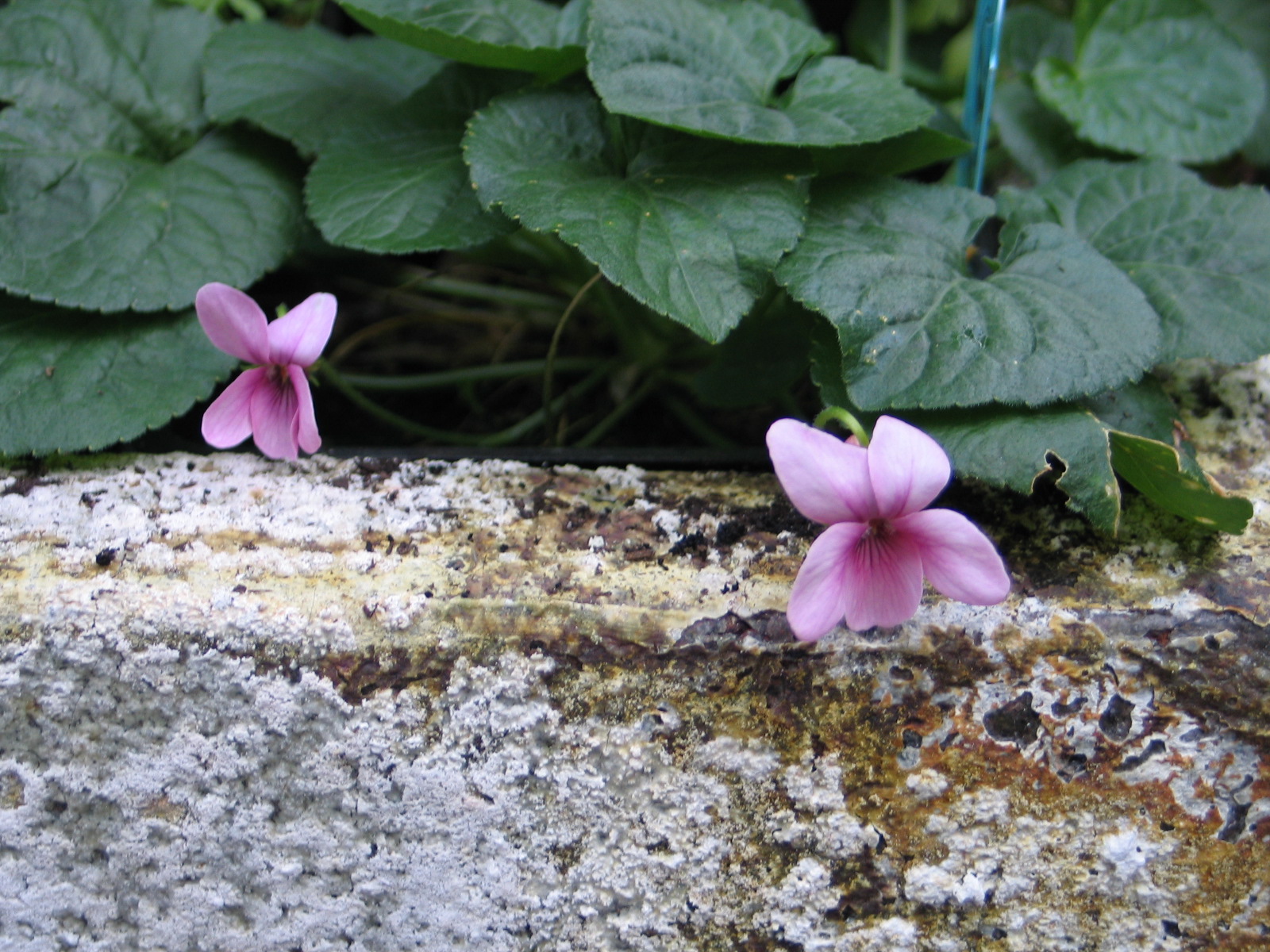 Here's a story from my experience: I once worked for a small design/build firm for a short time. I advanced the design development phase of a large and historically significant home. The Owners were out of town a lot, so it took a while to schedule a meeting, but the company had been working on the project for a while already. I read the correspondence and found the company's client questionnaire. The only notes I found regarding aesthetics were written by the client on the (mailed) questionnaire. They noted that they did not like the color orange or Roses. Okay then - I designed around what would be appropriate for the stately old home, avoiding orange flowers, orange foliage, and Roses. We finally met, and they brought images with them of things that they liked. After some discussion, it became clear that the only images they responded to favorably included chartreuse foliage and white flowers. In fact, they requested that we include shrub roses!!
Here's a story from my experience: I once worked for a small design/build firm for a short time. I advanced the design development phase of a large and historically significant home. The Owners were out of town a lot, so it took a while to schedule a meeting, but the company had been working on the project for a while already. I read the correspondence and found the company's client questionnaire. The only notes I found regarding aesthetics were written by the client on the (mailed) questionnaire. They noted that they did not like the color orange or Roses. Okay then - I designed around what would be appropriate for the stately old home, avoiding orange flowers, orange foliage, and Roses. We finally met, and they brought images with them of things that they liked. After some discussion, it became clear that the only images they responded to favorably included chartreuse foliage and white flowers. In fact, they requested that we include shrub roses!!
My Client's Plants
I am working on the design of a garden in San Francisco and was pleasantly surprised today by the delivery of the Hellebores that were ordered from Canada. While I was potting them for protection during their wait to be installed at the site, it occurred to me that this shipment of plants represented some thoughts on customer service and the design/construction processes.Most Landscape Architecture firms would not be able to accept delivery of plants for a client and care for those plants until they could be installed. They might rely instead on either using only the plants that are seasonally available or contract growing (with someone else) to care for those plants that must be received before the site is ready. There are issues of liability (what if they die?!), space, and materials for the task. What results can be either a prohibitively complicated and expensive ordeal, a garden that is skewed to one particular season, or having to ask the client to be patient and wait while plants become available in the future (not always acceptable by some clients). 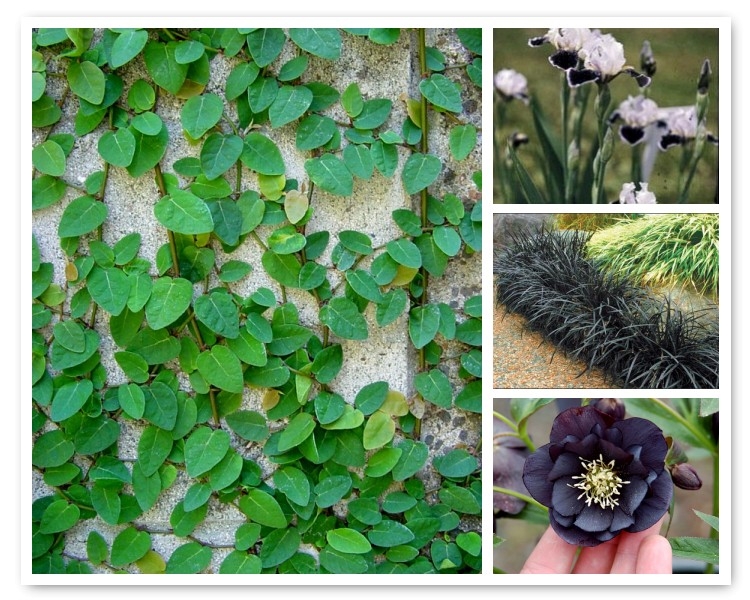 Included in this particular project there will be a discrete courtyard featuring a statue. We are using four different plants; Ficus pumila (Creeping Fig), Ophiopogon nigrescens (Black Mondograss), Helleborous 'Onyx Odyssea' (a double black flowering Lenten Rose), and Iris 'Frosted Velvet' (a "miniature tall" form Bearded Iris). The Ficus and Ophiopogon are evergreen and will form the main planting to show off the sculpture, then the Iris will be in bloom in the Spring with leaves from late Winter through Summer, and the Hellebores will be in bloom in Winter with leaves holding on through Spring. I don't expect to have both Irises and Hellebores flower at the same time, though it is possible that this could occur depending on weather conditions and temperatures (especially in the Bay Area). While the Irises prefer more sun and the Hellebores more shade, the site location and orientation make it possible to use both in the same small area.I presented the palette (above) to the client earlier this month. Before doing presenting, I learned that the Iris were not going to be shipped until next July, and that our local growers who carried the Hellebores had already sold out for the year. I explained to the client that we would be ordering the Iris for delivery nine months in the future and that the Hellebores would need to be ordered immediately from Canada before the grower's shipping season closed. He accepted the planting concept, so I had the plants ordered with delivery to my home. I did this for a couple of reasons:1. I wanted to inspect the plants before anyone else saw them to make sure there were no problems (and I work from home). Having them shipped to my home also meant that I could accept delivery at any time (they arrived today - the Saturday after Thanksgiving) regardless of holidays, weekends, and business hours.2. The plants would be shipped bare root and would need immediate attention by someone who knew what to do and had the time.3. The landscape contractor had not yet been formally retained.4. This also made me feel that I was giving my client the best service I could by personally protecting his investment in them and, by extension, his trust in me.It is my habit to order plants from all over the world. Because of this, I knew ahead of time that both mail order companies were reputable and that the plants would likely be in great shape. I was not disappointed! Fraser's Thimble Farms worked with me to hold the plants until the payment arrived. I took their advice to pay for air priority shipping. The plants also required a Phytosanitary Certificate (they were inspected by the Canadian Food Inspection Agency) before coming into the U.S. The shipment was also opened and inspected by U.S. Customs upon arrival.Below are some photos from this morning's potting:
Included in this particular project there will be a discrete courtyard featuring a statue. We are using four different plants; Ficus pumila (Creeping Fig), Ophiopogon nigrescens (Black Mondograss), Helleborous 'Onyx Odyssea' (a double black flowering Lenten Rose), and Iris 'Frosted Velvet' (a "miniature tall" form Bearded Iris). The Ficus and Ophiopogon are evergreen and will form the main planting to show off the sculpture, then the Iris will be in bloom in the Spring with leaves from late Winter through Summer, and the Hellebores will be in bloom in Winter with leaves holding on through Spring. I don't expect to have both Irises and Hellebores flower at the same time, though it is possible that this could occur depending on weather conditions and temperatures (especially in the Bay Area). While the Irises prefer more sun and the Hellebores more shade, the site location and orientation make it possible to use both in the same small area.I presented the palette (above) to the client earlier this month. Before doing presenting, I learned that the Iris were not going to be shipped until next July, and that our local growers who carried the Hellebores had already sold out for the year. I explained to the client that we would be ordering the Iris for delivery nine months in the future and that the Hellebores would need to be ordered immediately from Canada before the grower's shipping season closed. He accepted the planting concept, so I had the plants ordered with delivery to my home. I did this for a couple of reasons:1. I wanted to inspect the plants before anyone else saw them to make sure there were no problems (and I work from home). Having them shipped to my home also meant that I could accept delivery at any time (they arrived today - the Saturday after Thanksgiving) regardless of holidays, weekends, and business hours.2. The plants would be shipped bare root and would need immediate attention by someone who knew what to do and had the time.3. The landscape contractor had not yet been formally retained.4. This also made me feel that I was giving my client the best service I could by personally protecting his investment in them and, by extension, his trust in me.It is my habit to order plants from all over the world. Because of this, I knew ahead of time that both mail order companies were reputable and that the plants would likely be in great shape. I was not disappointed! Fraser's Thimble Farms worked with me to hold the plants until the payment arrived. I took their advice to pay for air priority shipping. The plants also required a Phytosanitary Certificate (they were inspected by the Canadian Food Inspection Agency) before coming into the U.S. The shipment was also opened and inspected by U.S. Customs upon arrival.Below are some photos from this morning's potting:
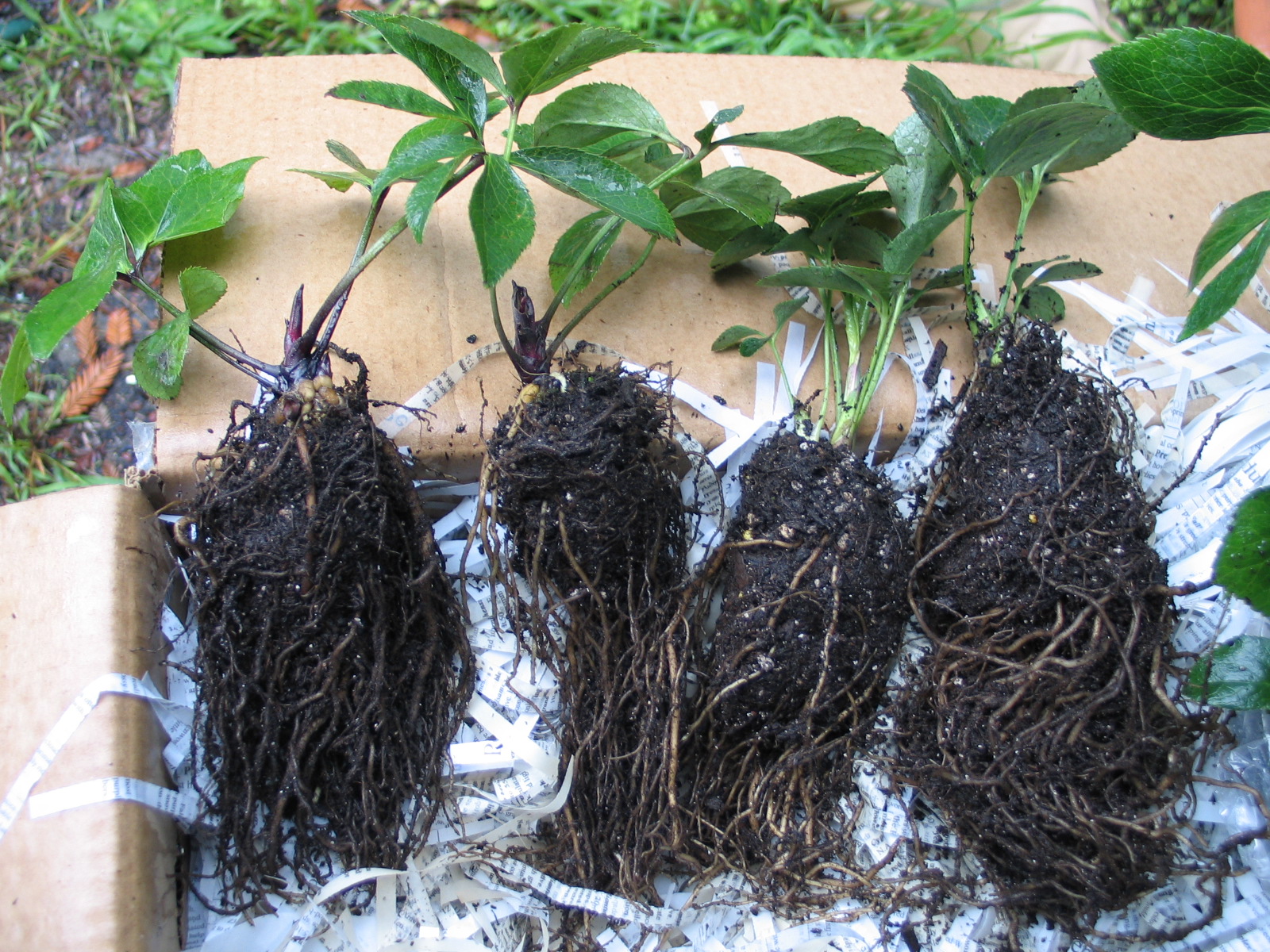
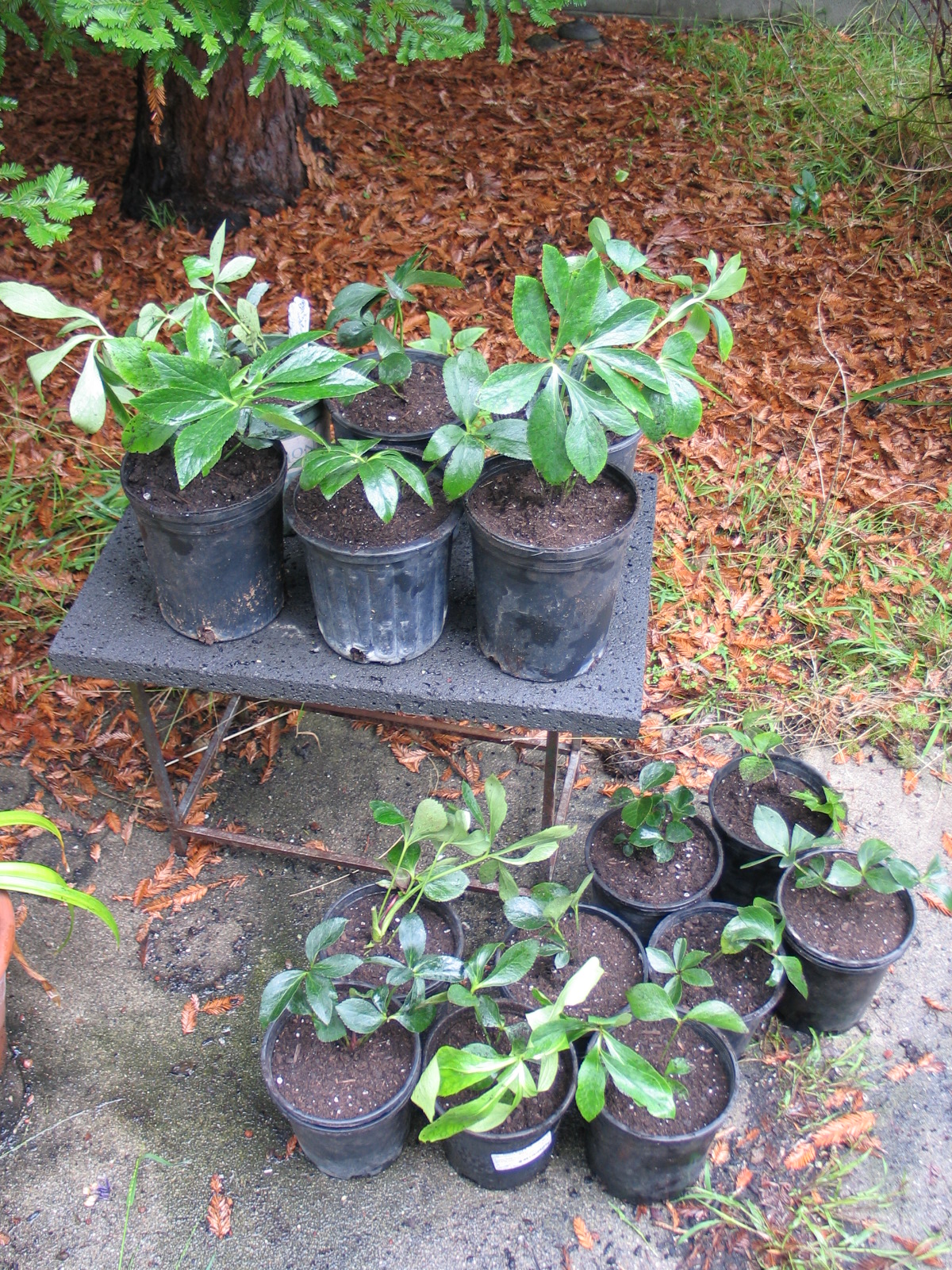 All in all, excellent plants - potted and ready for what comes next. My own Hellebores have not leafed-out yet, so it will be interesting to see how these behave, but they each have new growth on them (see the middle photo). They've been through a lot, being bare-rooted, inspected twice, then finally re-potted (they'll be disturbed again soon when they're planted in their new home).I have been frustrated in the past with the issues that come up when trying to design a garden around the seasonal availability of the plants I want to use. I think it is well worth the extra effort to get the exact plants desired rather than giving up and just finding something else that is less of a pain. I am looking forward to seeing them planted in their new home and will post again....
All in all, excellent plants - potted and ready for what comes next. My own Hellebores have not leafed-out yet, so it will be interesting to see how these behave, but they each have new growth on them (see the middle photo). They've been through a lot, being bare-rooted, inspected twice, then finally re-potted (they'll be disturbed again soon when they're planted in their new home).I have been frustrated in the past with the issues that come up when trying to design a garden around the seasonal availability of the plants I want to use. I think it is well worth the extra effort to get the exact plants desired rather than giving up and just finding something else that is less of a pain. I am looking forward to seeing them planted in their new home and will post again....
"Low Maintenance" Gardens?
It seems that everyone is aware that gardens can require some effort to maintain. Professionals in the landscape design and construction industry understand that the success of any outdoor space depends on thoughtful design, quality installation, and ongoing, intelligent maintenance. Not one of these three items can deliver the desired result without the other two.
Read moreI am honored. Thanks!
My friend and colleague Page Huyette asked me to write a post for her blog as a guest writer. I wrote about editing as part of the design process. Everyone works differently, I think this post illuminates part of my process really well (it should, I wrote it!).Here is the link to that post, and below one of the images (because no blog post should be without pictures!). I took this snapshot one day a few years ago. I had been working for a while and when I "came up for air", I thought that all the stuff on my desk (at Scott Lewis Landscape Architecture) looked interesting together. I'm glad I took the picture, I had no idea it would come in handy some day.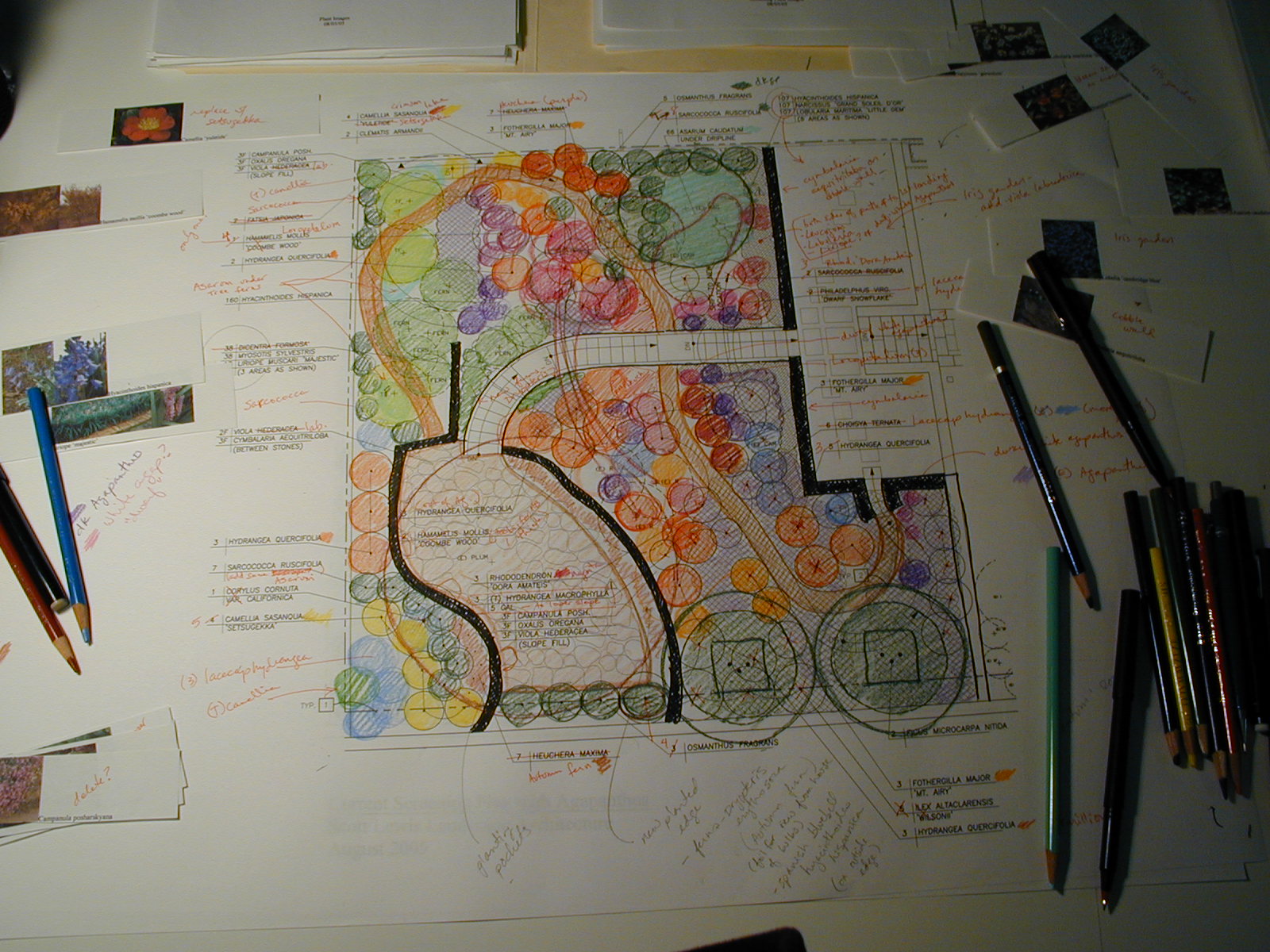 Thanks!
Thanks!
Planting Inspiration - a thought
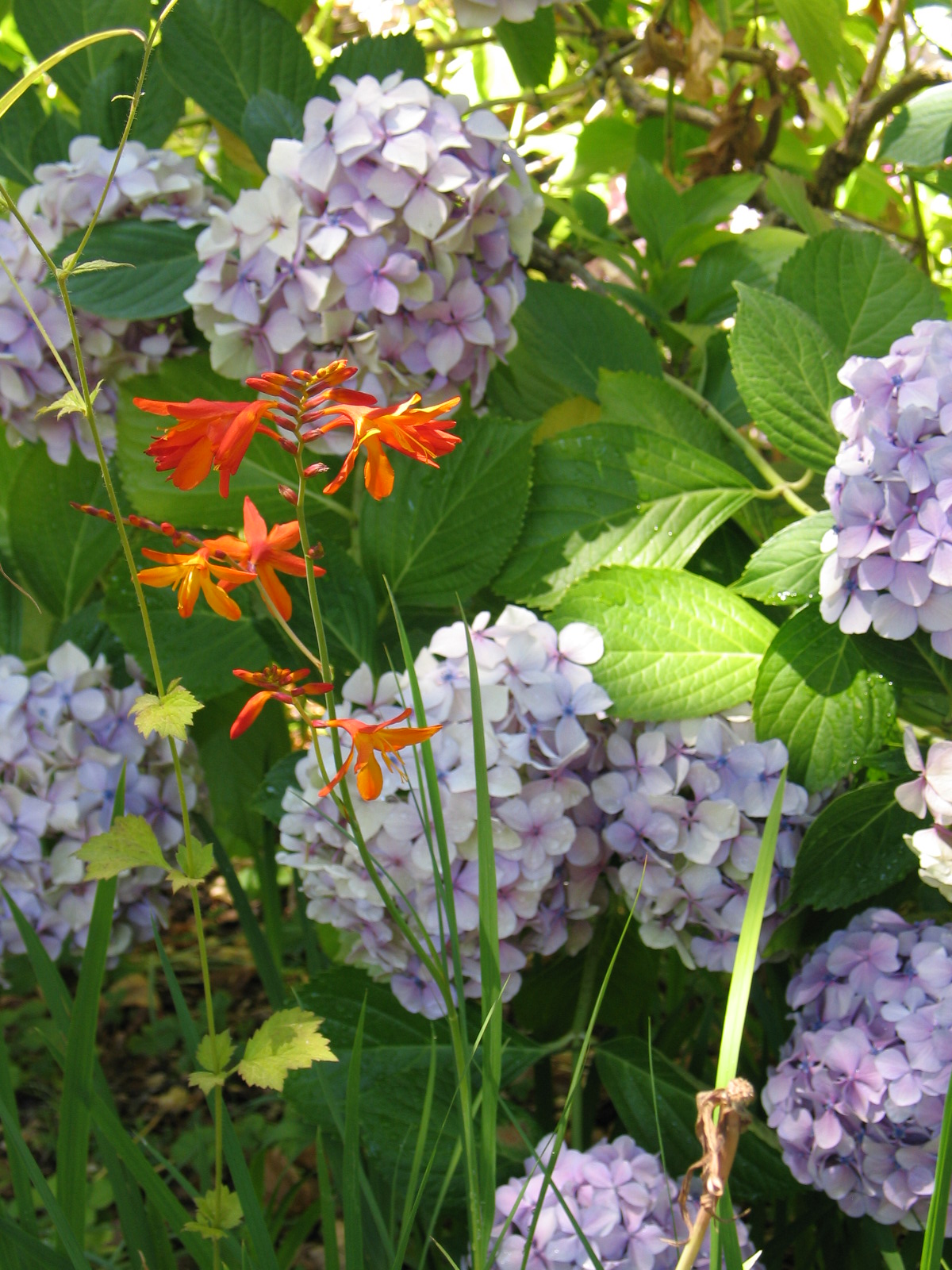 I wonder sometimes about the planting design process of other designers. Some always design the "bones" of the garden first and work their way down to smaller plants, others begin with a point of inspiration, a style, and build a garden around that concept. I seem to work in more than one direction at a time. Occasionally a garden will tell me what it wants to be, sometimes I have to ponder longer to find its voice.Whatever happens on a project, though, I maintain a substantial image library. I recently visited Filoli earlier this month and took the photo above of Crocosmia and Hydrangeas planted together. I recognize that not everybody would respond favorably to this combination based solely on the colors, but seeing them together like that gave me the idea for this post - what if you compared several cultivars of Hydrangea with a variety Crocosmias (in a mix-and-match format)? What interesting planting combinations would arise? Would others find Crocosmia combined with Hydrangea attractive then?Just a thought. I like them all.
I wonder sometimes about the planting design process of other designers. Some always design the "bones" of the garden first and work their way down to smaller plants, others begin with a point of inspiration, a style, and build a garden around that concept. I seem to work in more than one direction at a time. Occasionally a garden will tell me what it wants to be, sometimes I have to ponder longer to find its voice.Whatever happens on a project, though, I maintain a substantial image library. I recently visited Filoli earlier this month and took the photo above of Crocosmia and Hydrangeas planted together. I recognize that not everybody would respond favorably to this combination based solely on the colors, but seeing them together like that gave me the idea for this post - what if you compared several cultivars of Hydrangea with a variety Crocosmias (in a mix-and-match format)? What interesting planting combinations would arise? Would others find Crocosmia combined with Hydrangea attractive then?Just a thought. I like them all.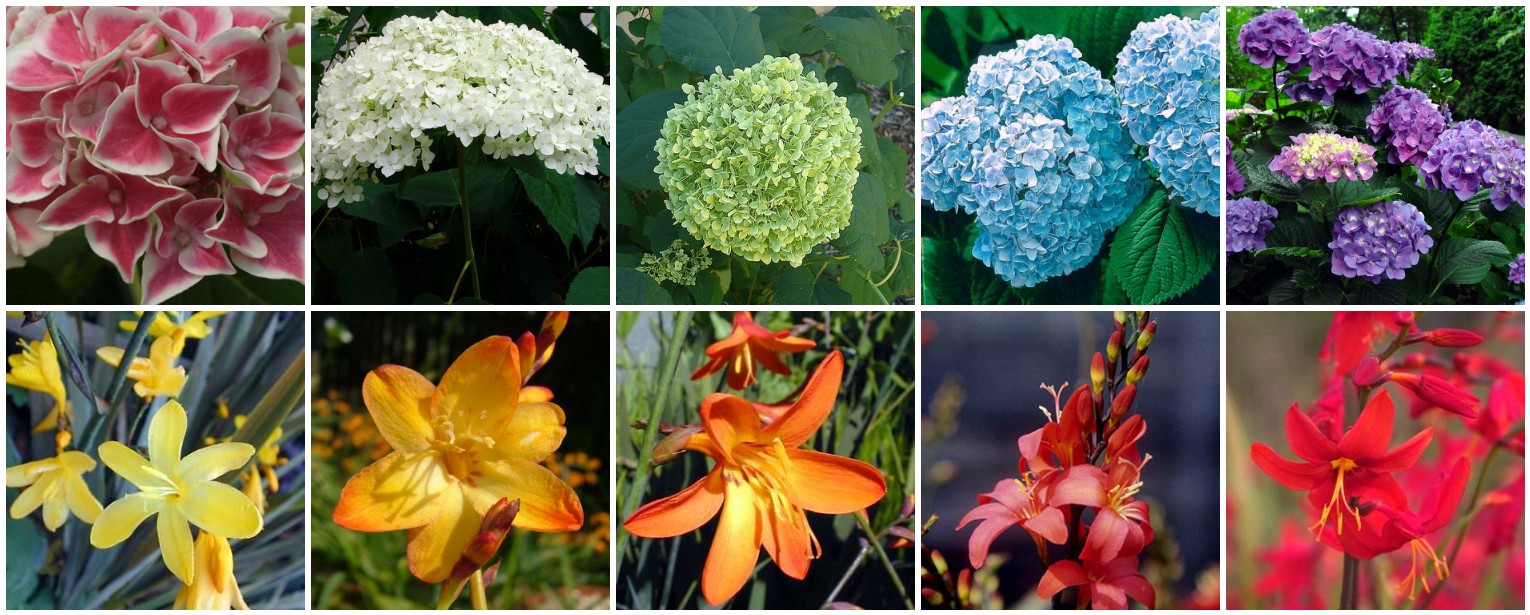
First Contact and The Lingo
"Could I request a post on finding and making first contact with a designer for those of us with gardens out of your jurisdiction so to speak? You’ve convinced me that outside help would be a good idea for my yard, but I don’t know where to go for it, and I don’t want to give the wrong first impression by not knowing the right terms."
Read moreFavorite Projects
About 5 years into my career, I left a job working on a wide variety of projects (hospitals, schools, trail systems, public parks, commercial spaces, but very few private residences) for a job that was exclusively private residences and estate work. I thought at the time that I was "looking for the soul" in Landscape Architecture....
Read moreHow to become a Great Client
I just got this blog post in my e-mail from Seth Godin this morning which ties in nicely with the book What Your Contractor Can't Tell You that my good friend Susan introduced me to. Nevermind that Mr. Godin uses logo design as his example, and never mind that the book focuses on working with Architects and contractors as opposed to Landscape Architects. BOTH sources discuss the same notion: being a "good" client, or at the very least, an informed one (weirdly, though, they seem to disagree on some points)."Good" clients are beneficial to the entire process, save everyone time, money, and headaches. The responsibility is not the client's alone, however. When the relationship between the client and the professionals they've hired is a productive one, the project always benefits. I am thinking about getting extra copies of that book for my office (knowing full well that suggesting to someone that they read either the post or the book won't necessarily result in them reading either). It is that good. No, really. The $15. you spend on that book can save you thousands in the long and short run. Not a bad return on investment!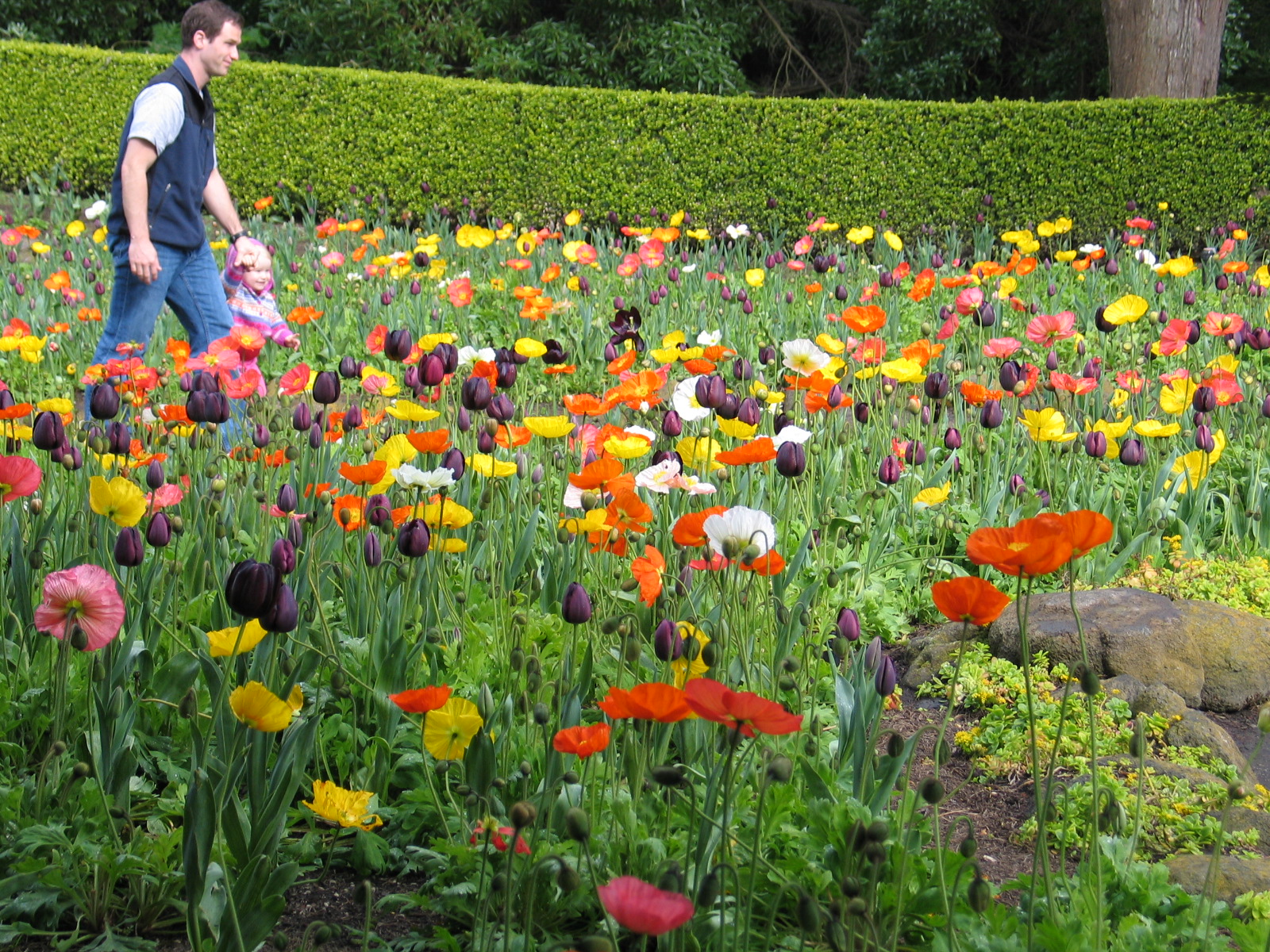 I leave you with images from the Windmill Garden in San Francisco - a seasonal planting that I really enjoyed back in April 2006.
I leave you with images from the Windmill Garden in San Francisco - a seasonal planting that I really enjoyed back in April 2006.